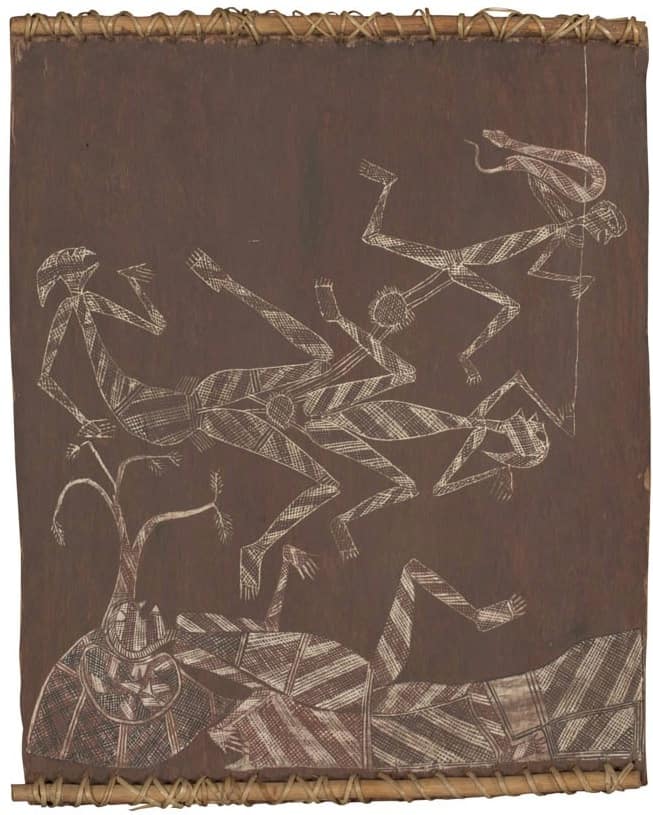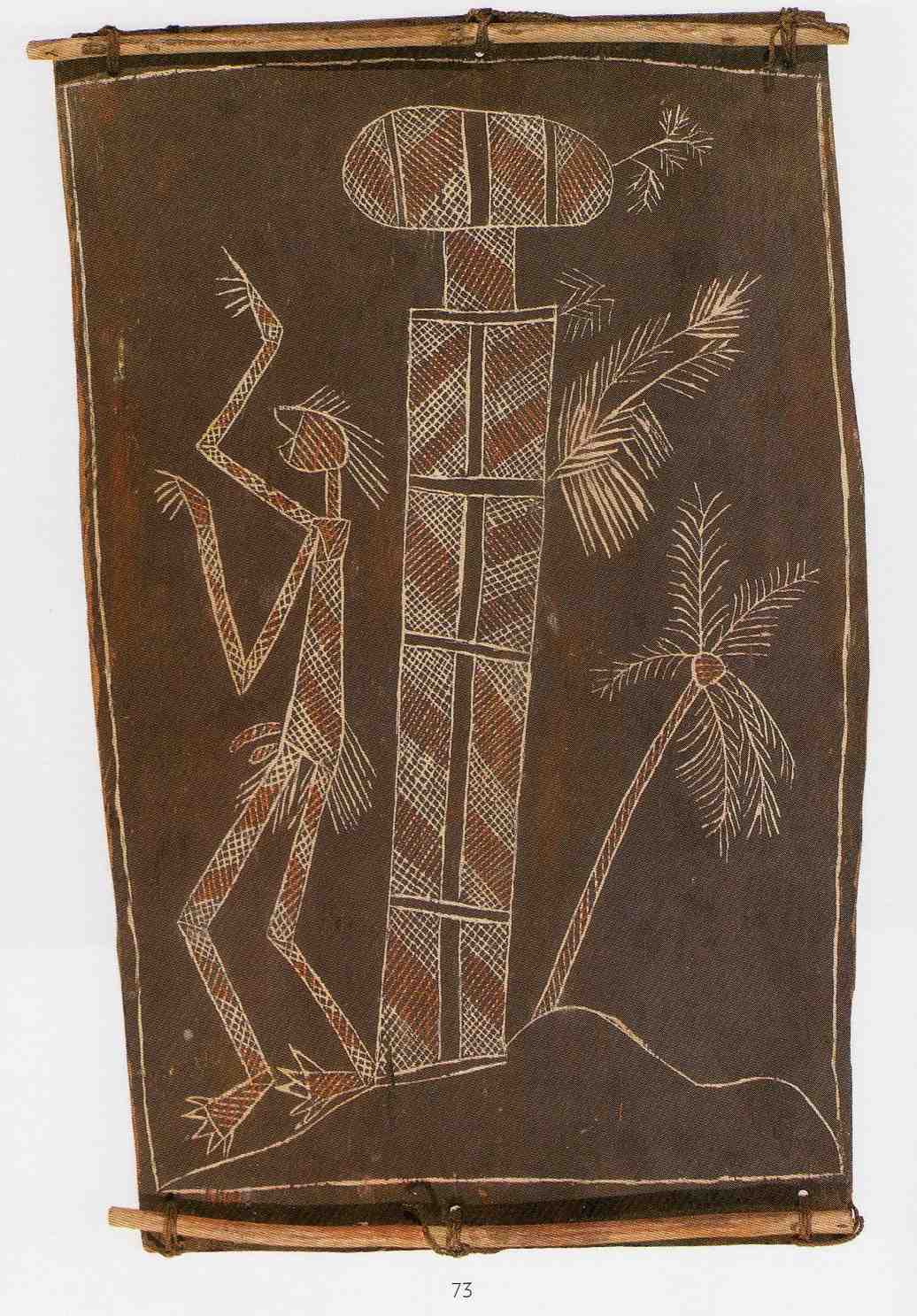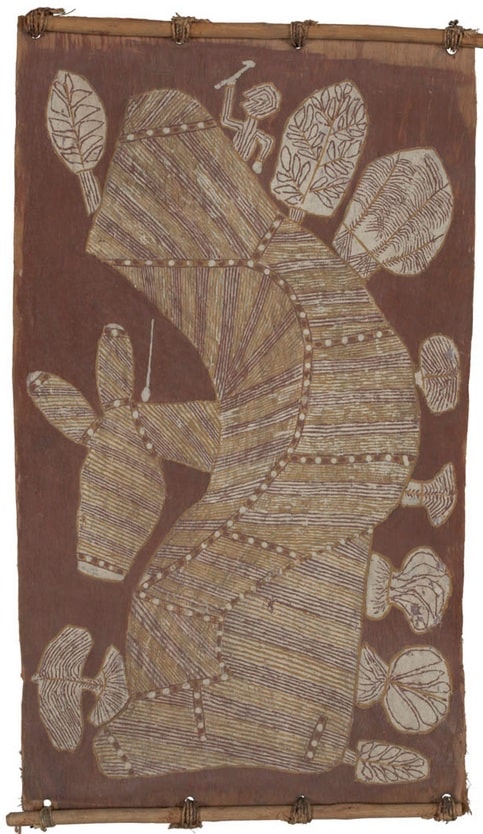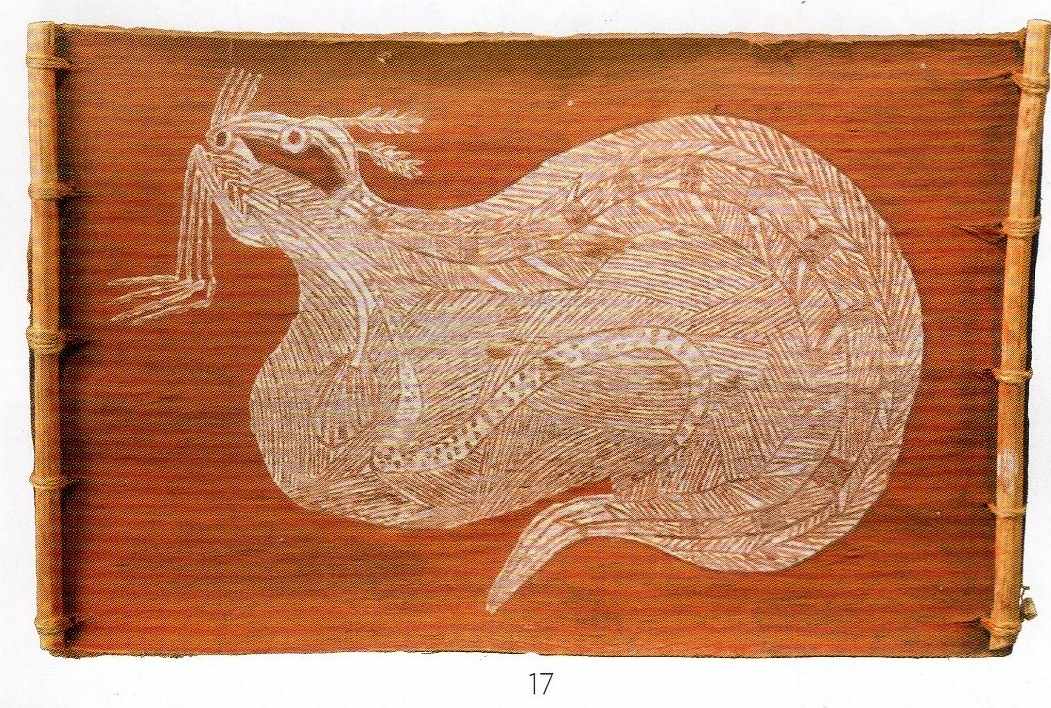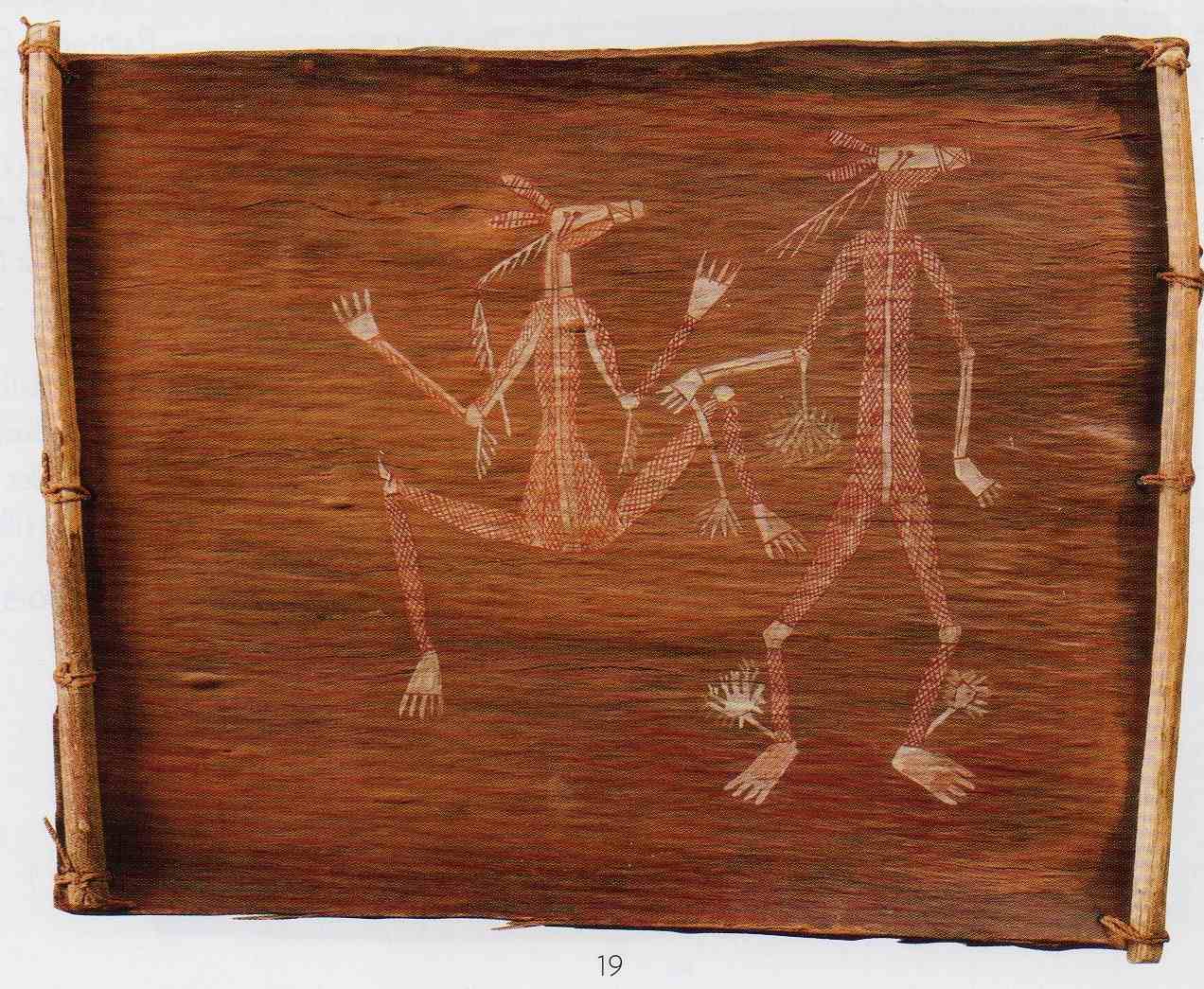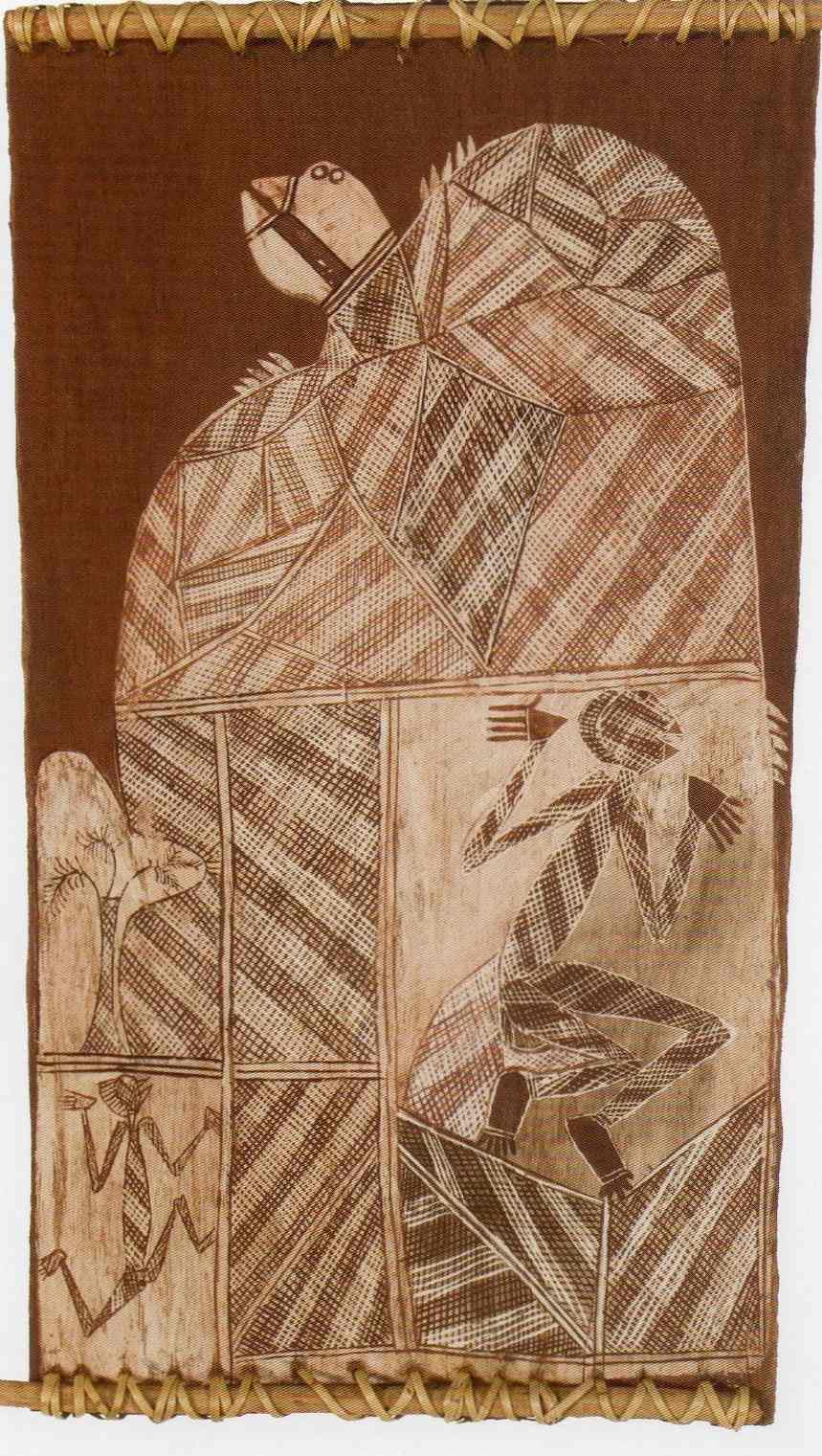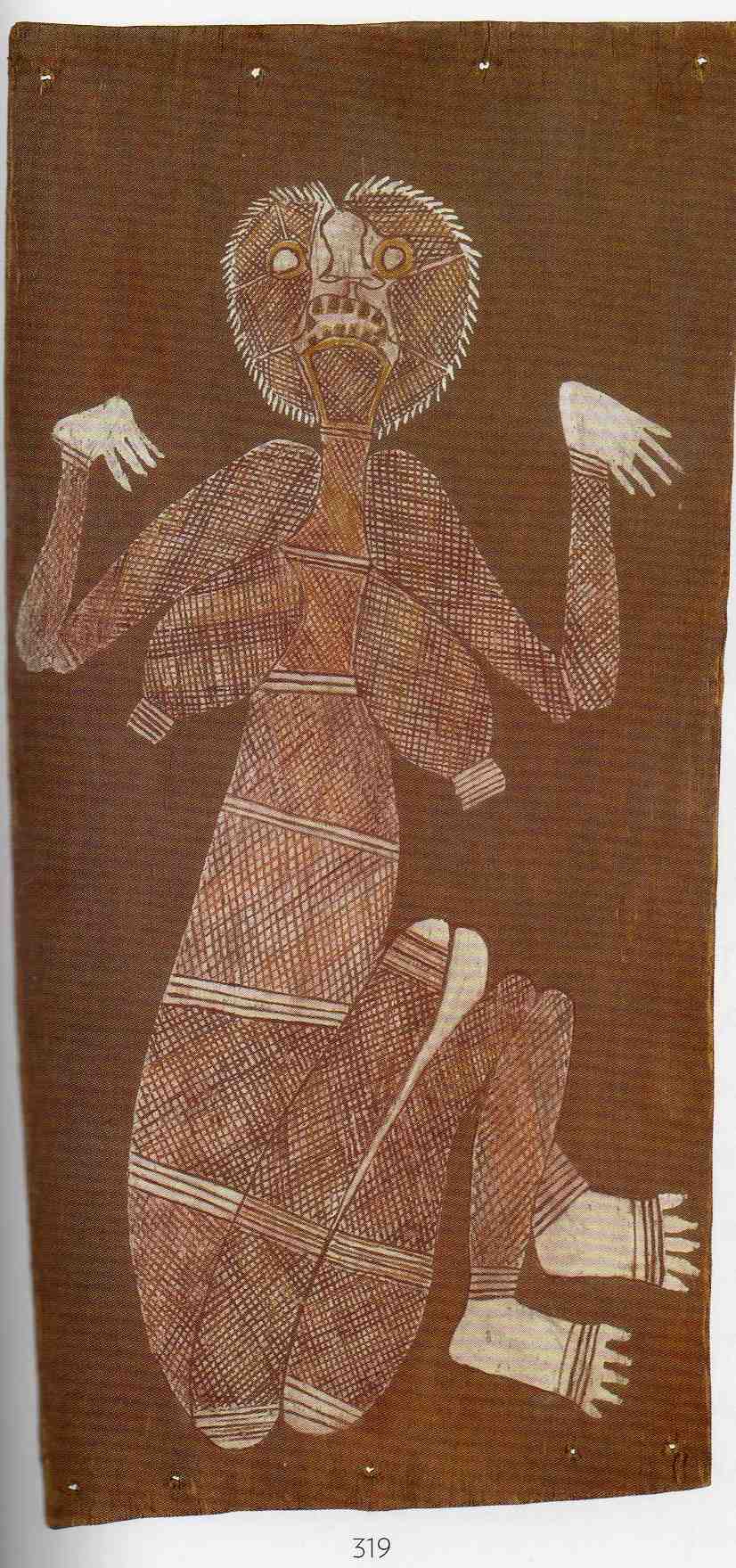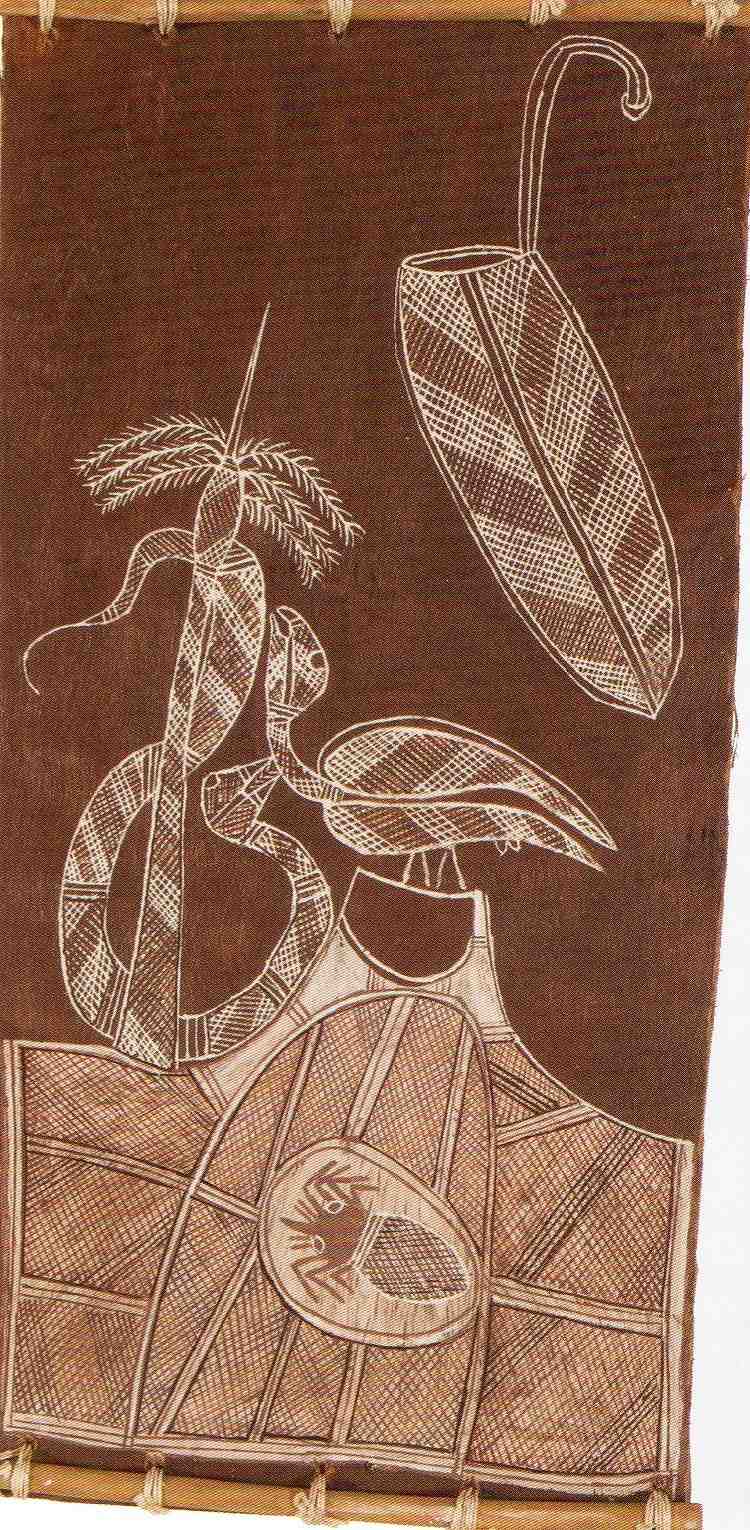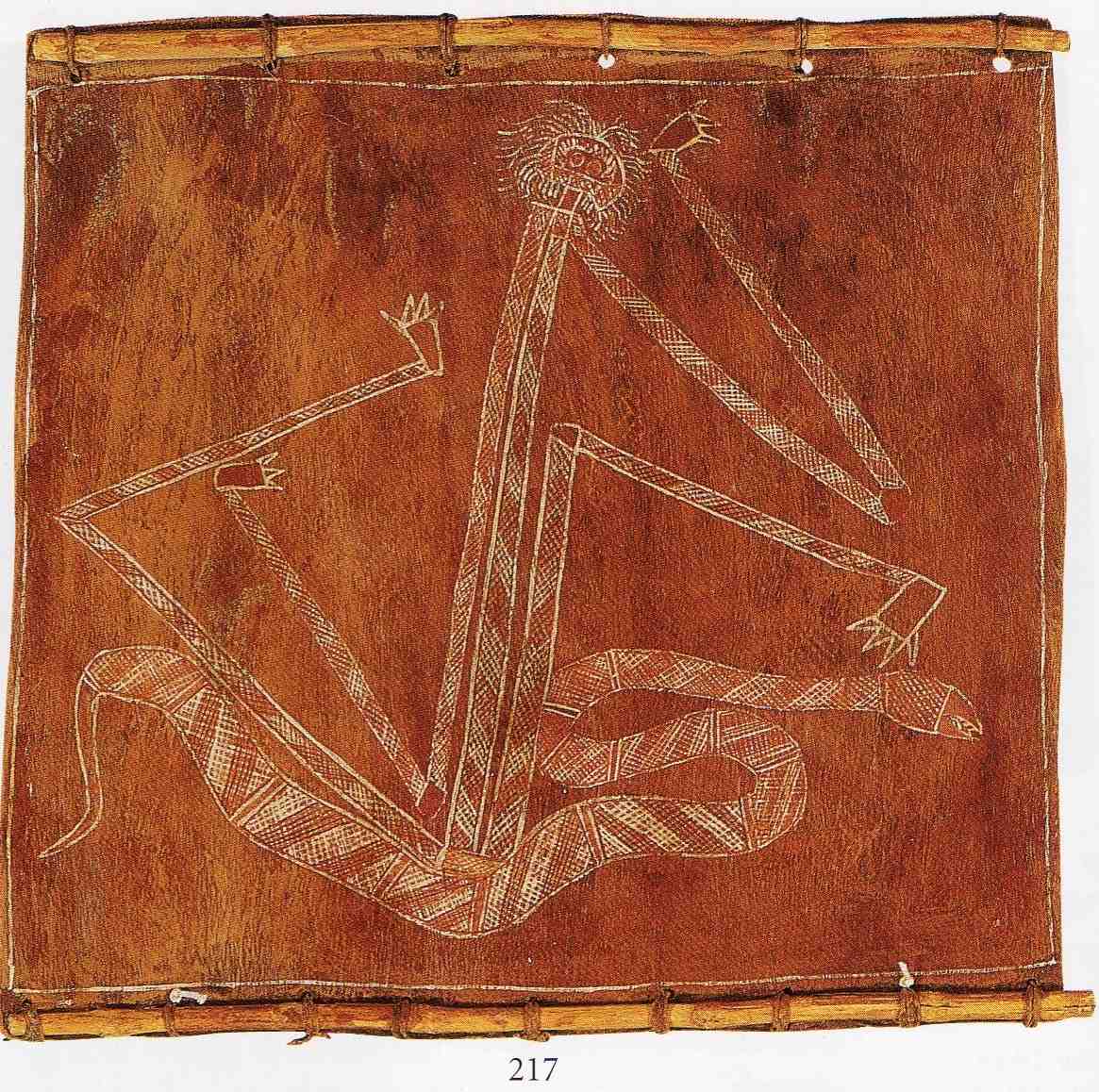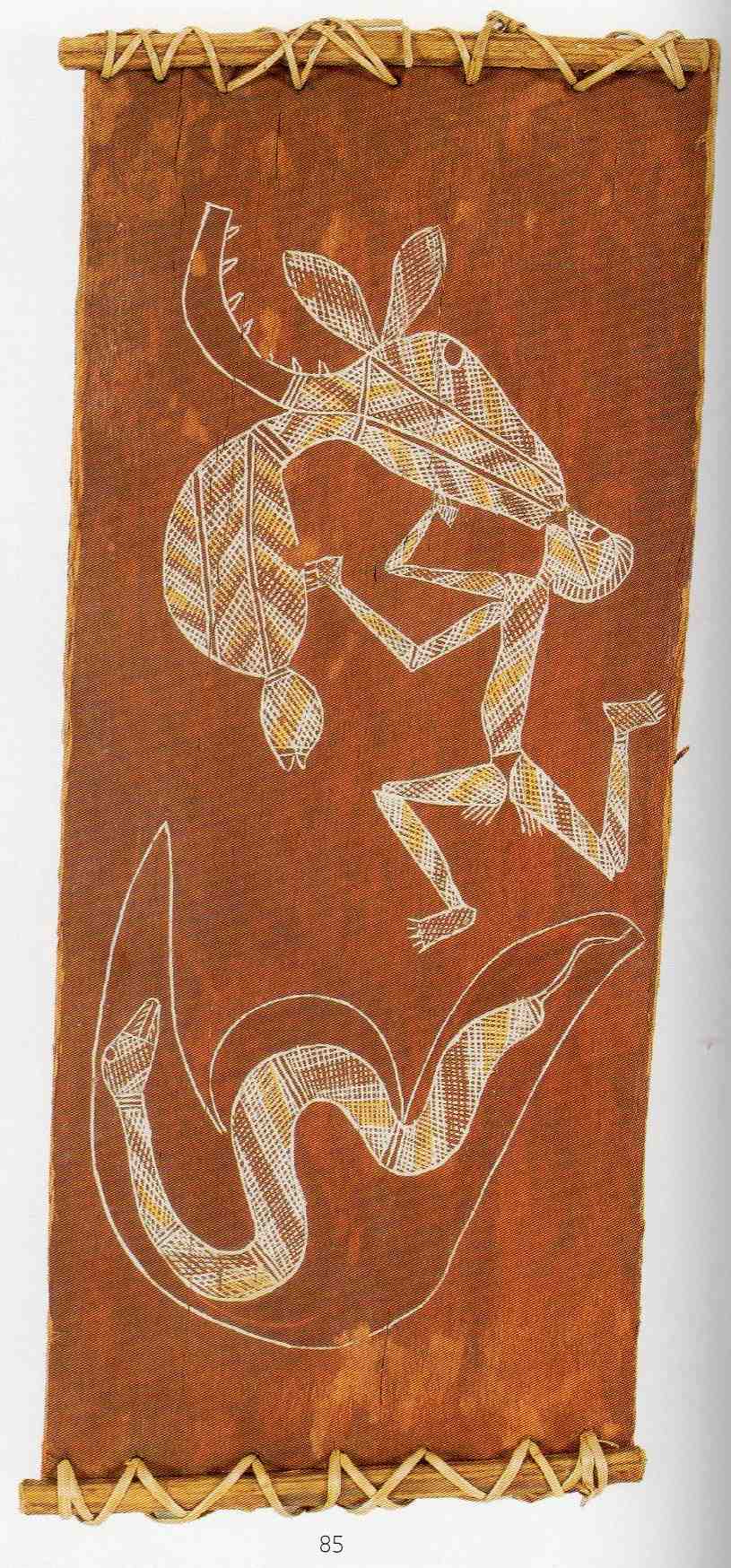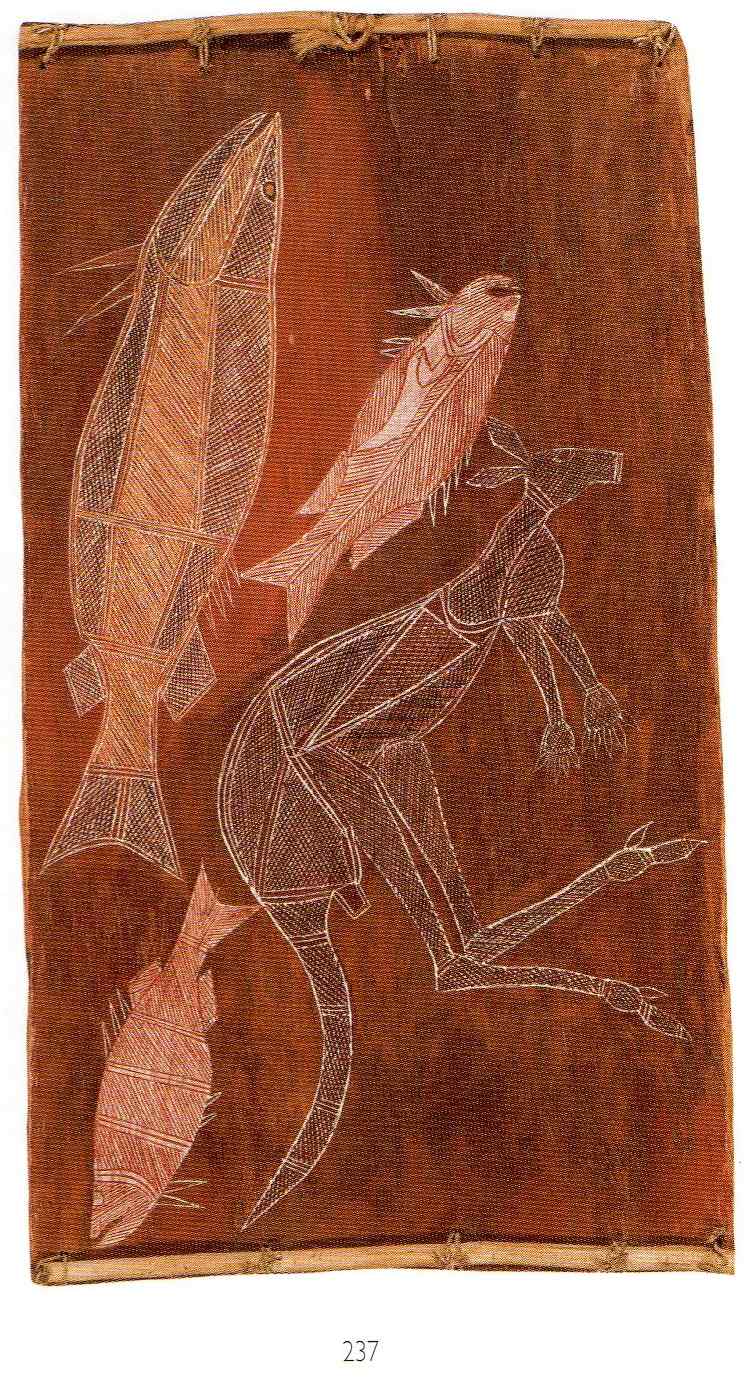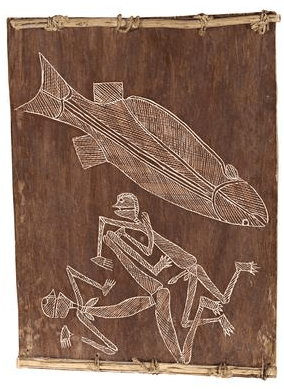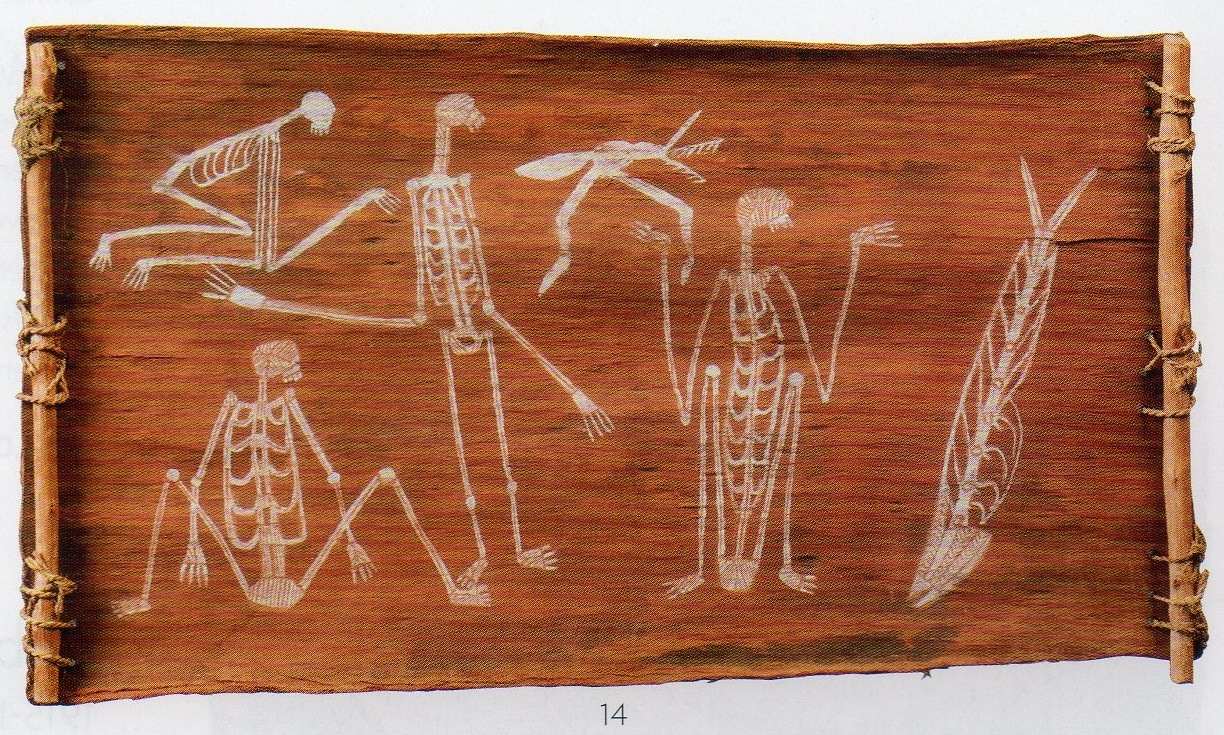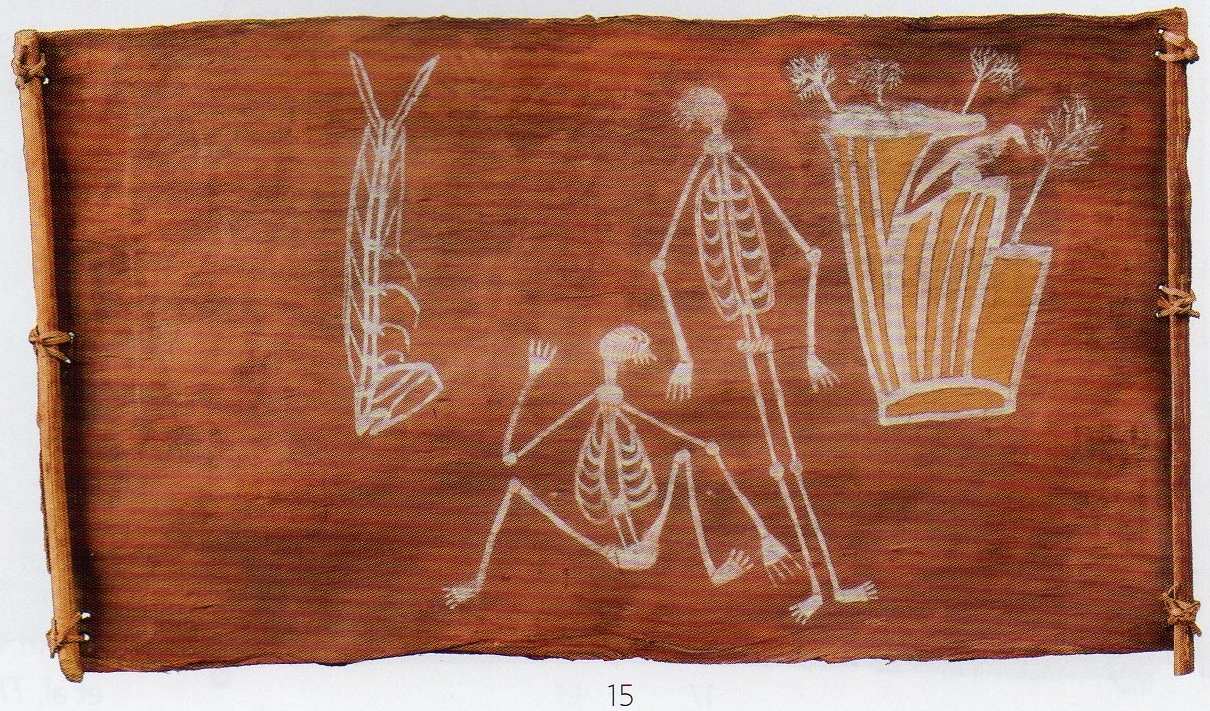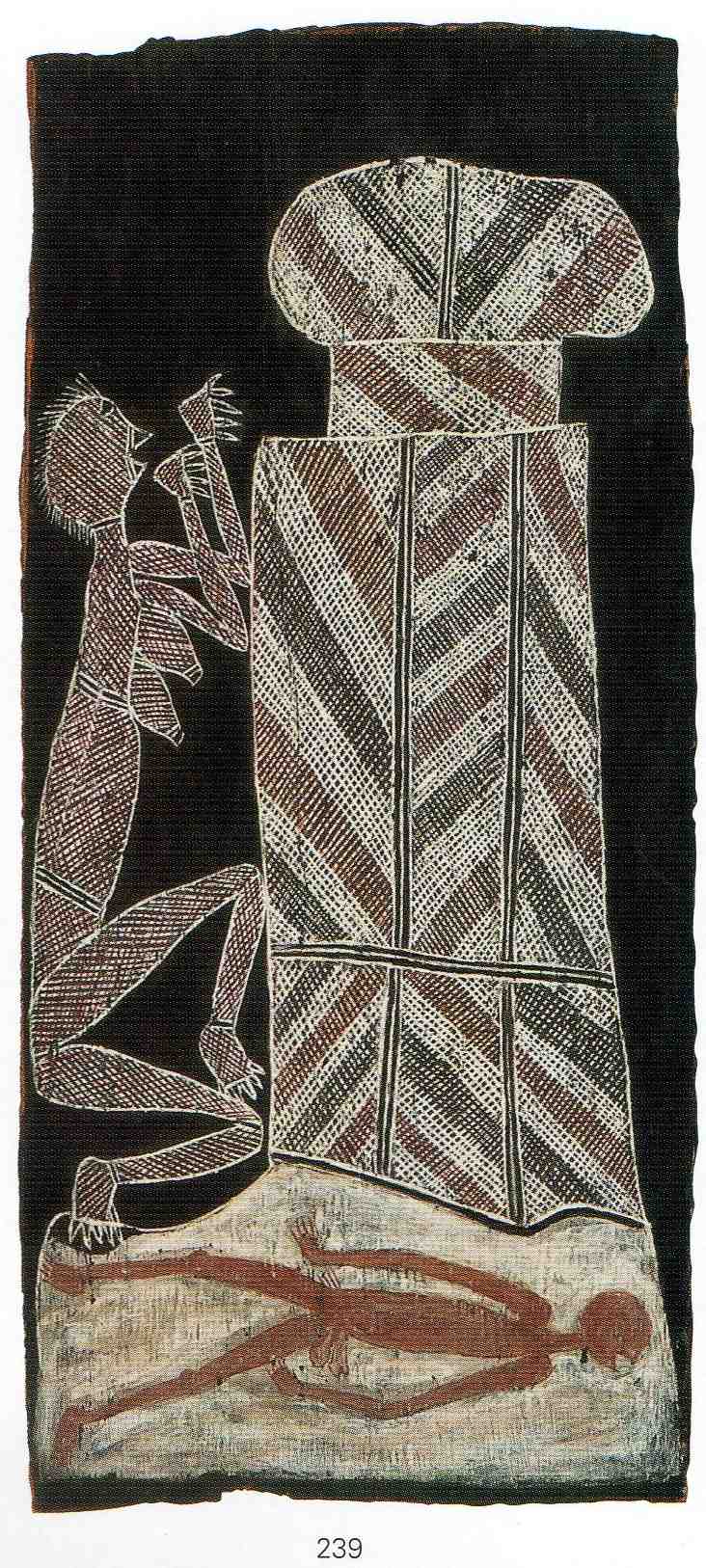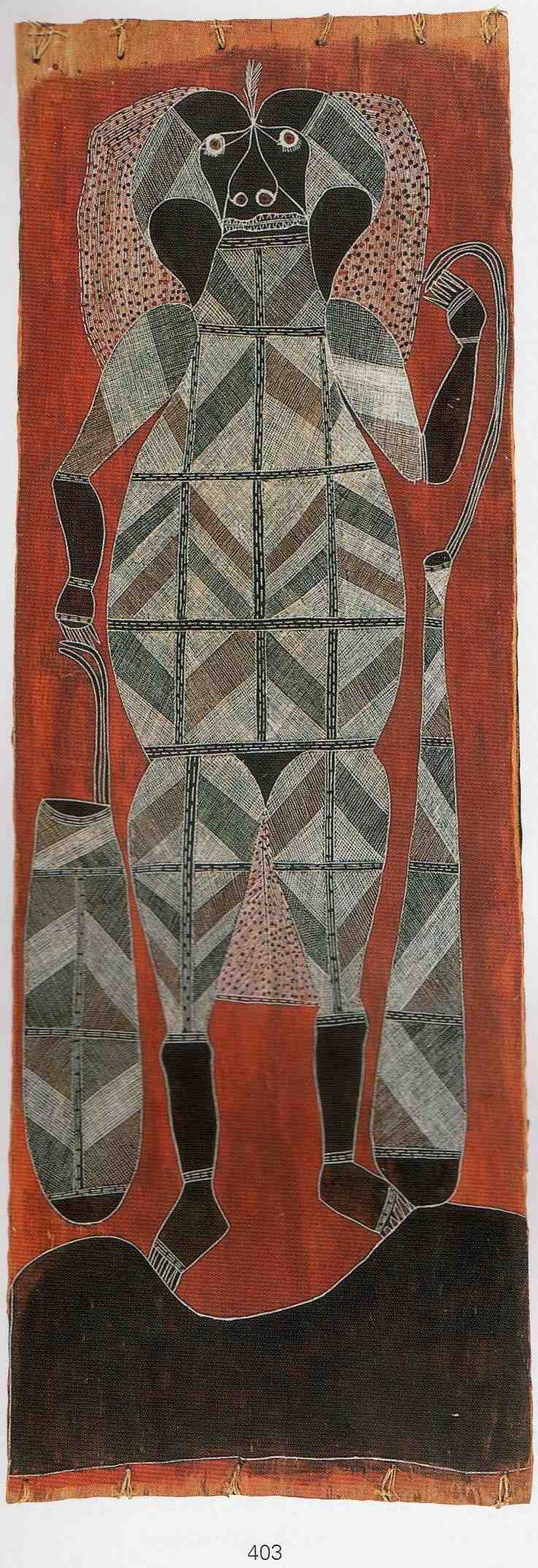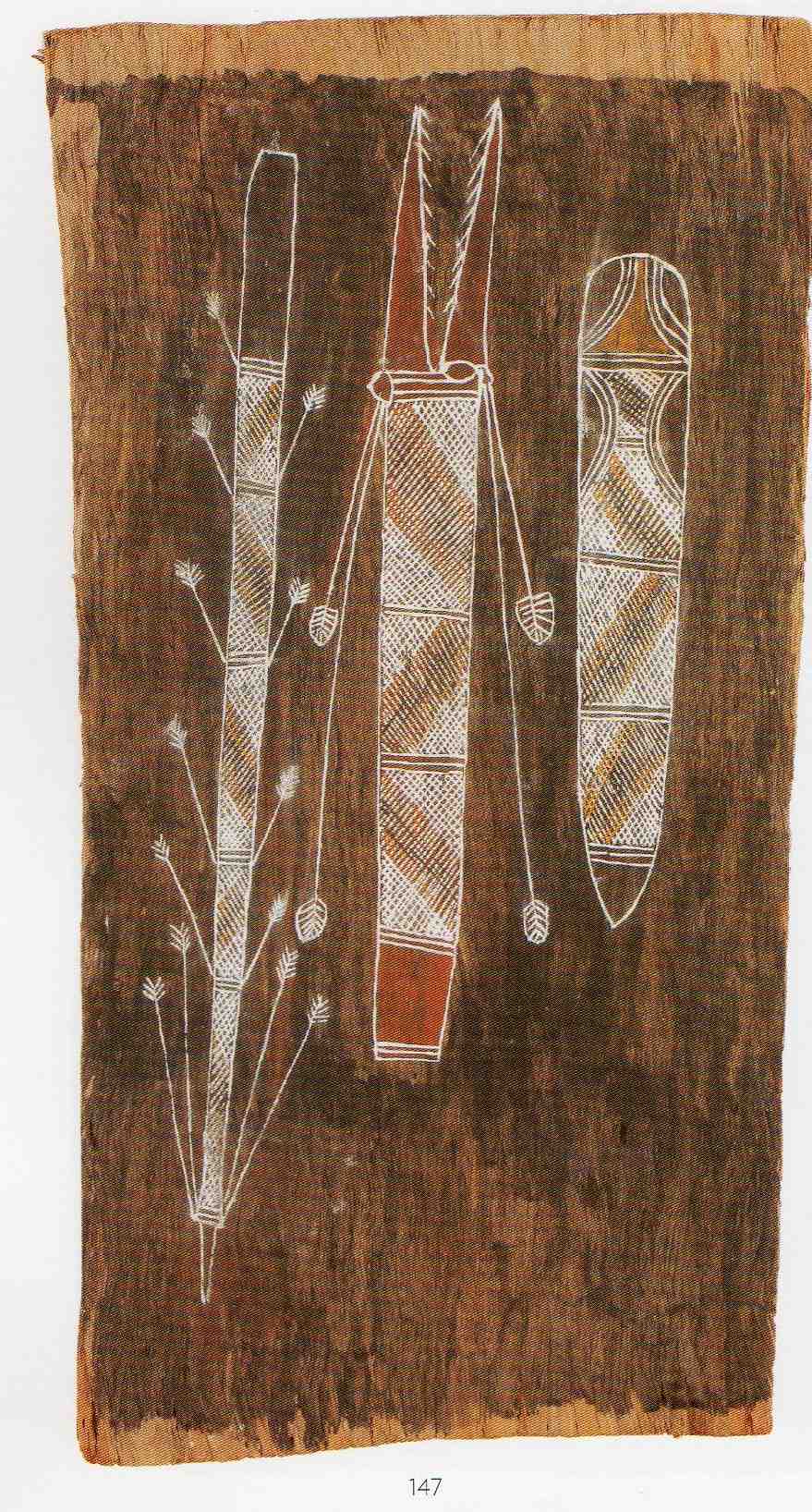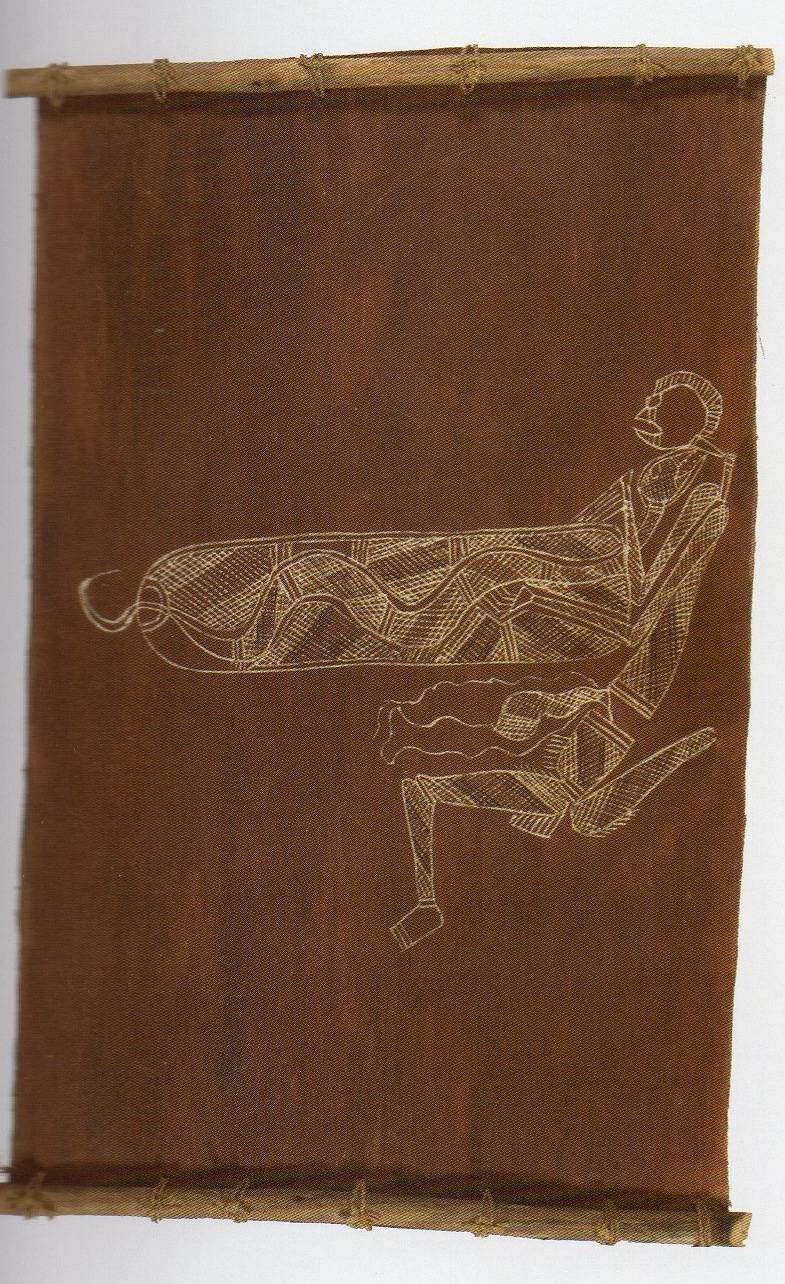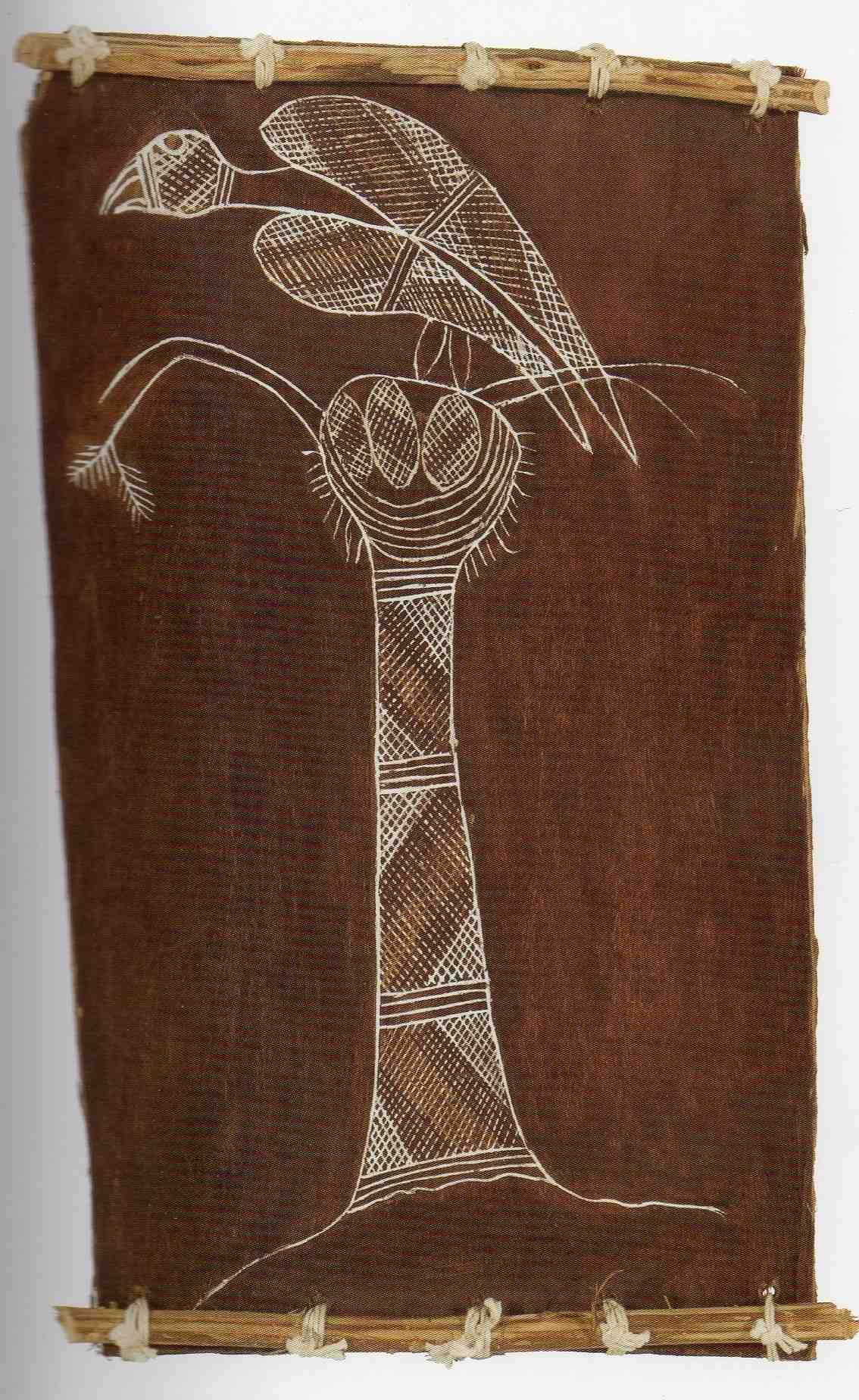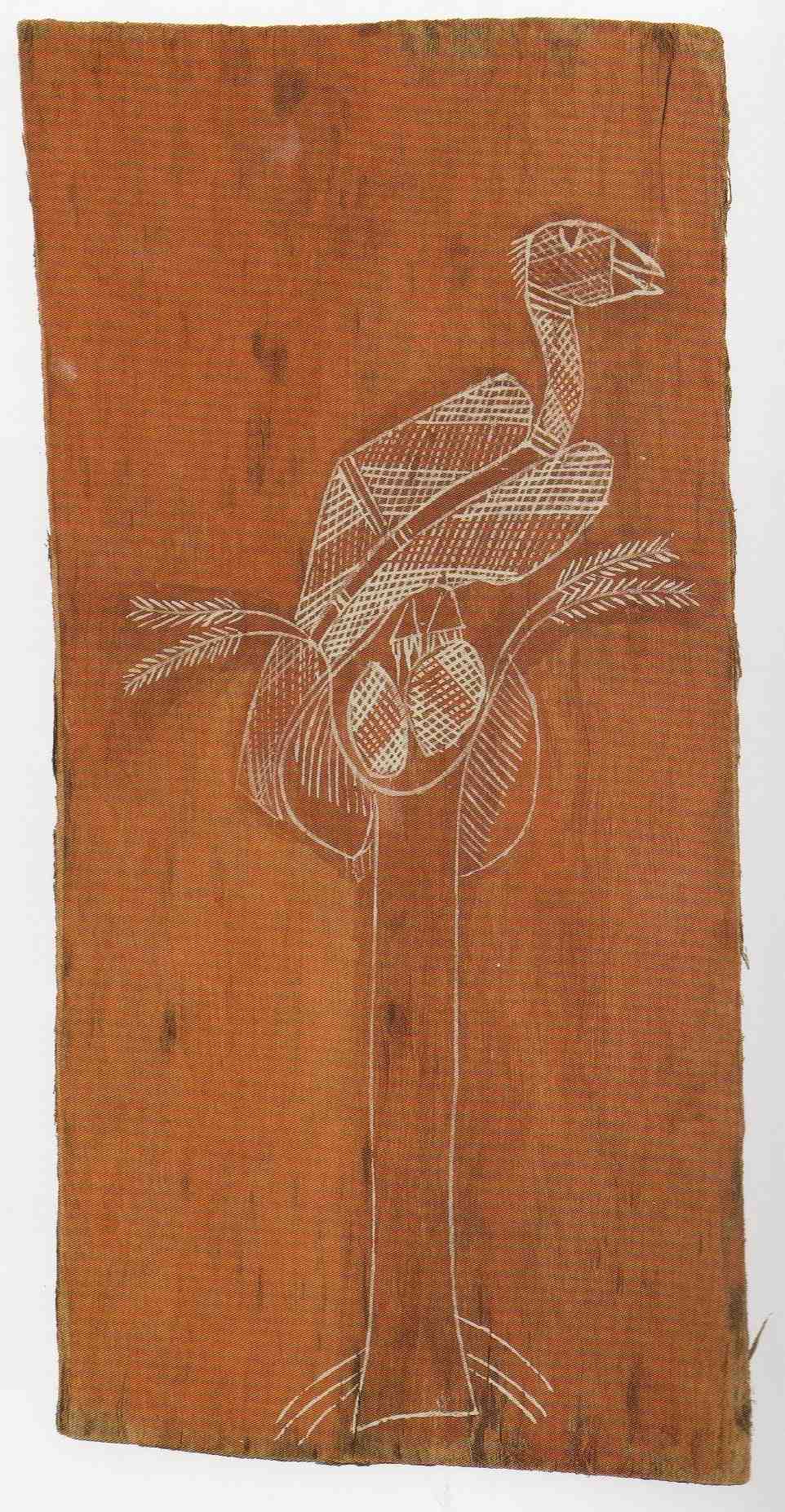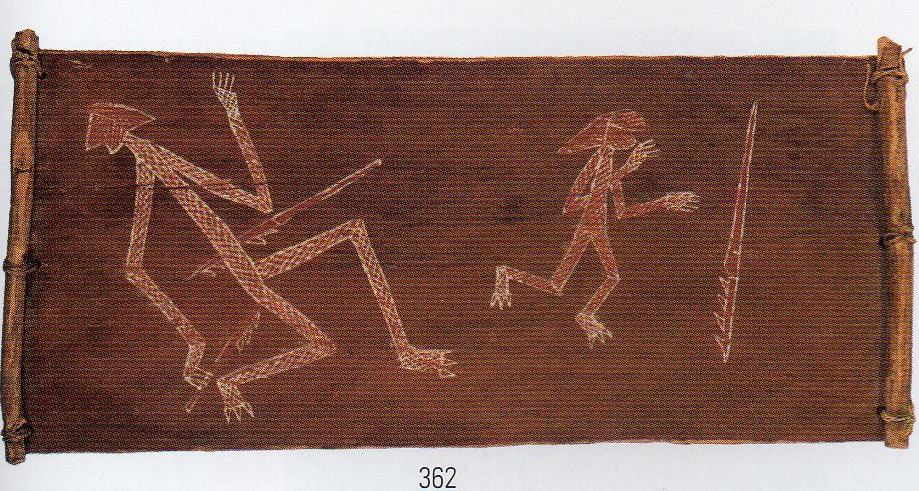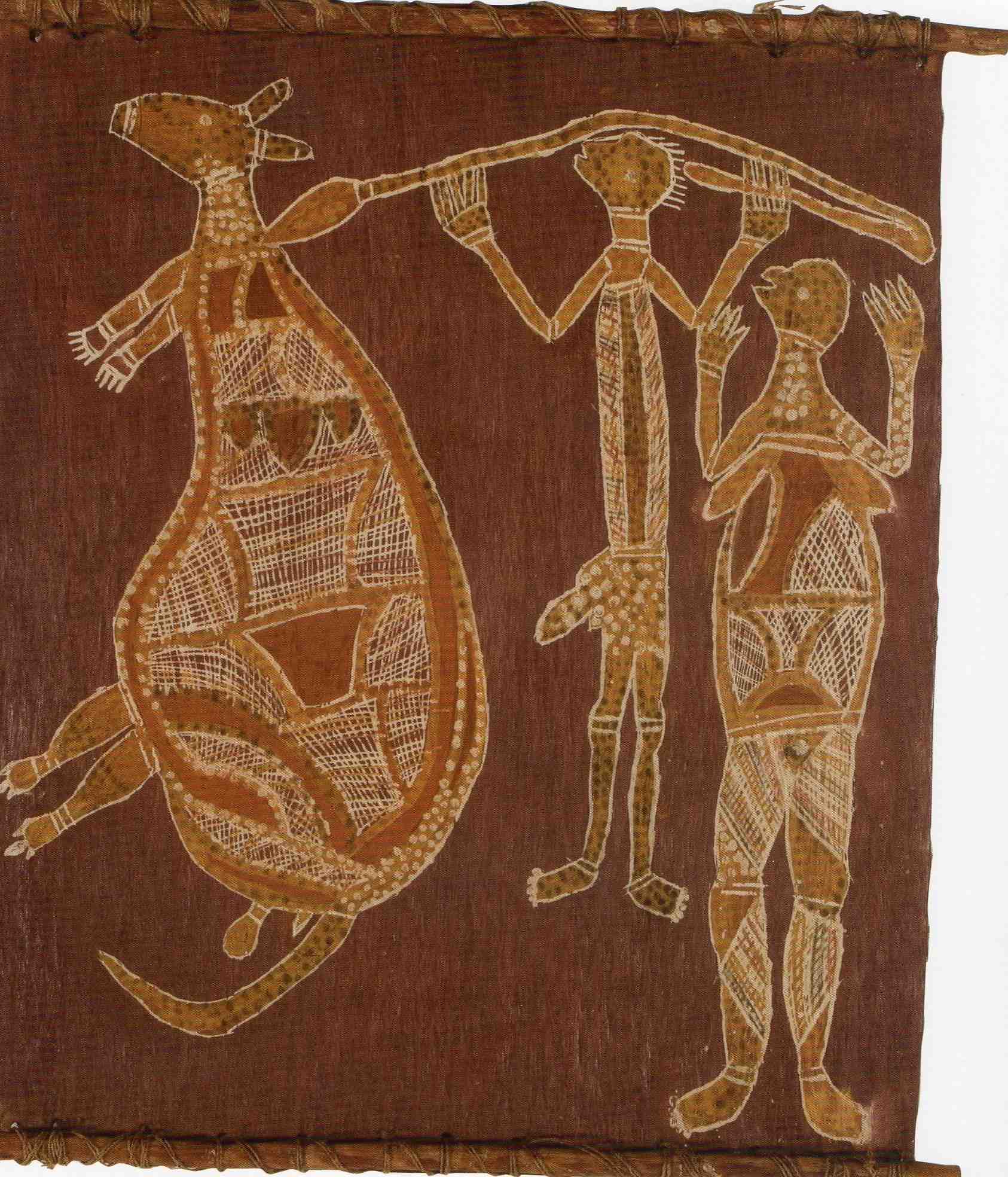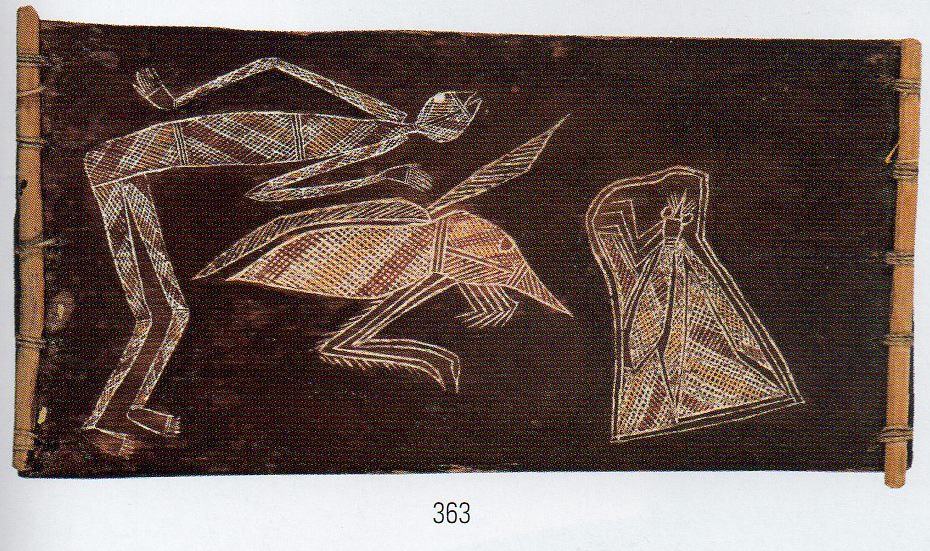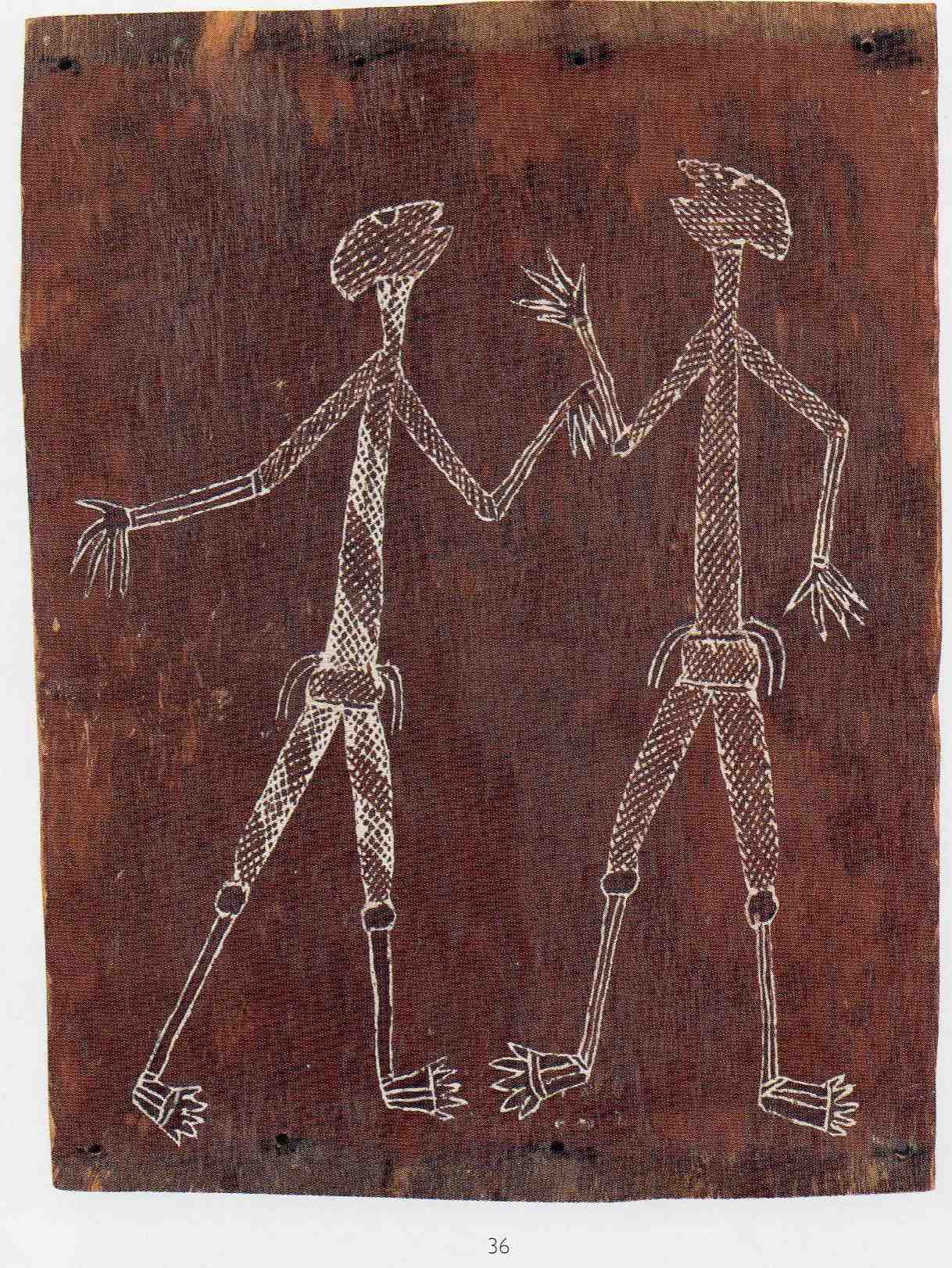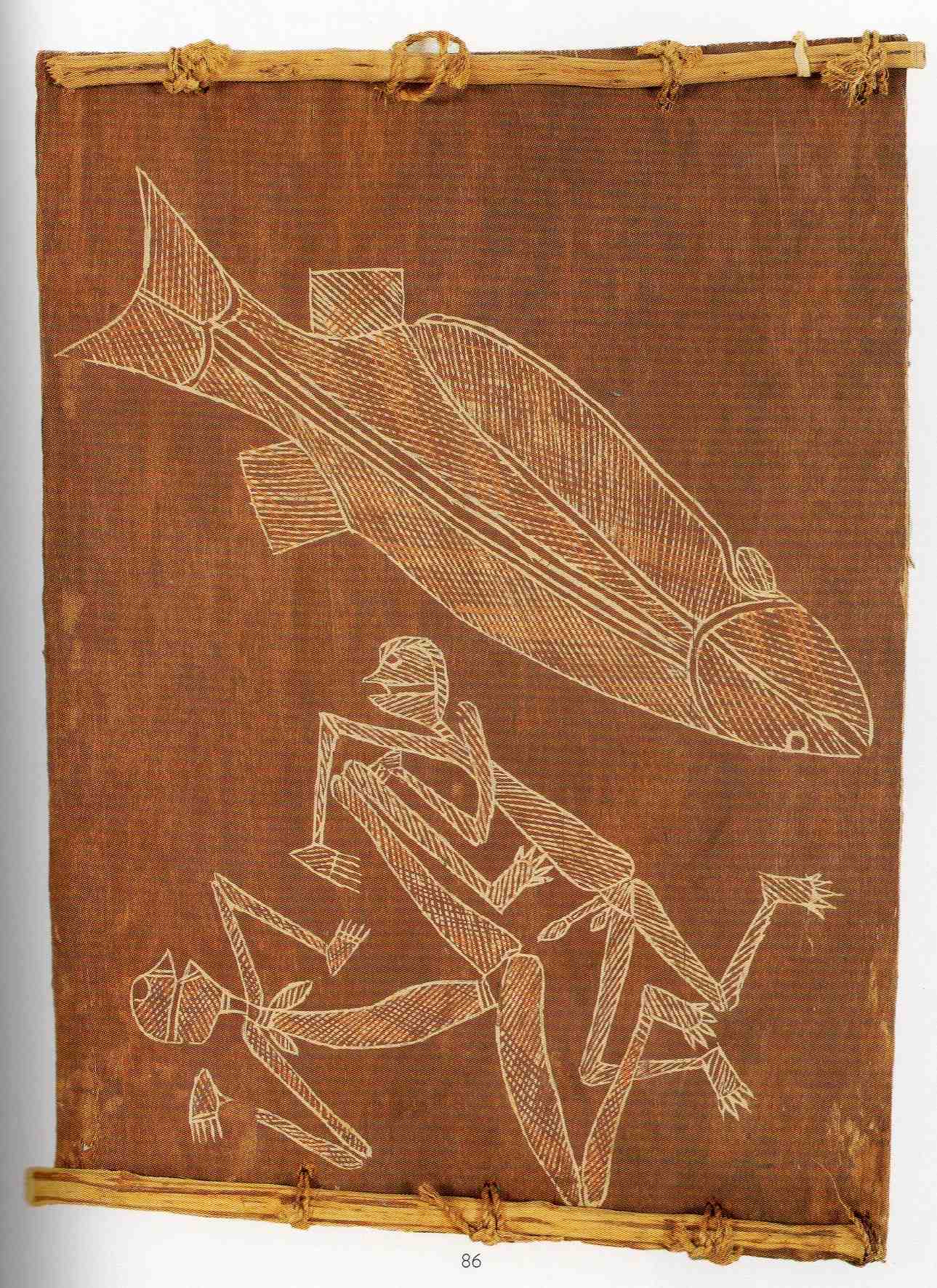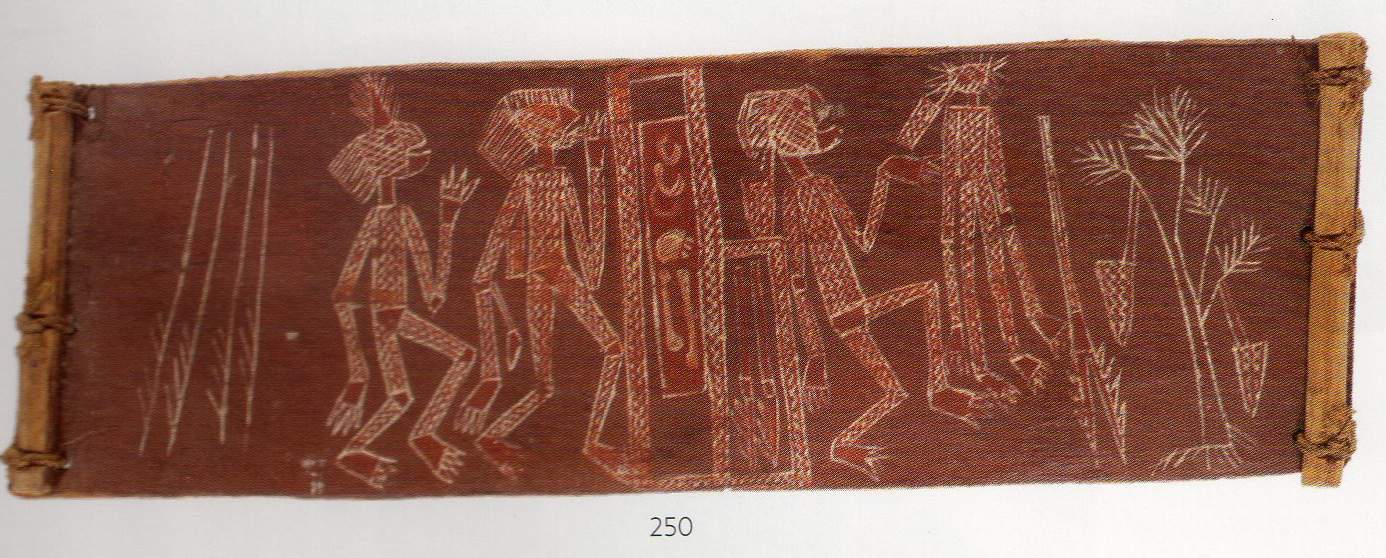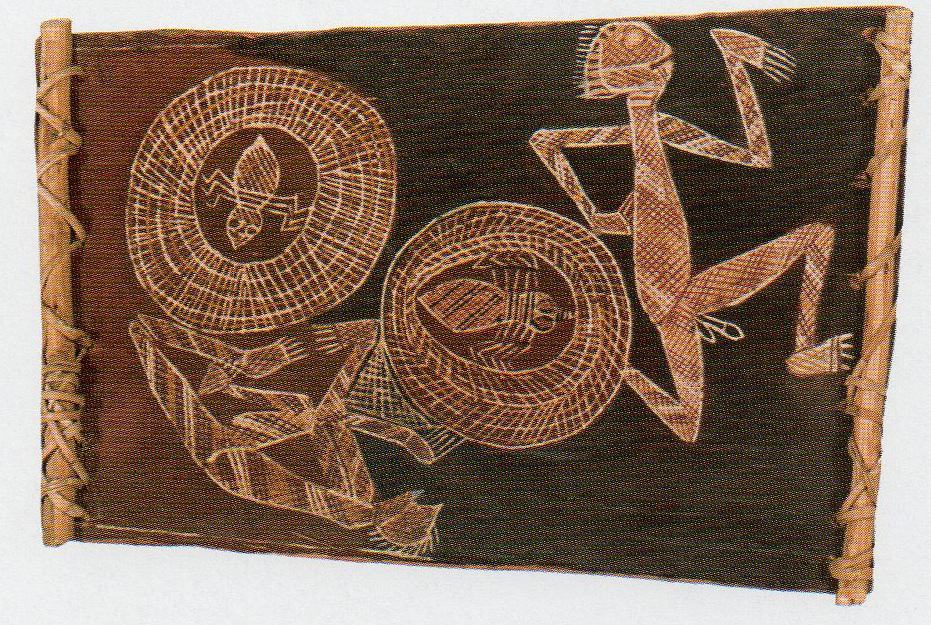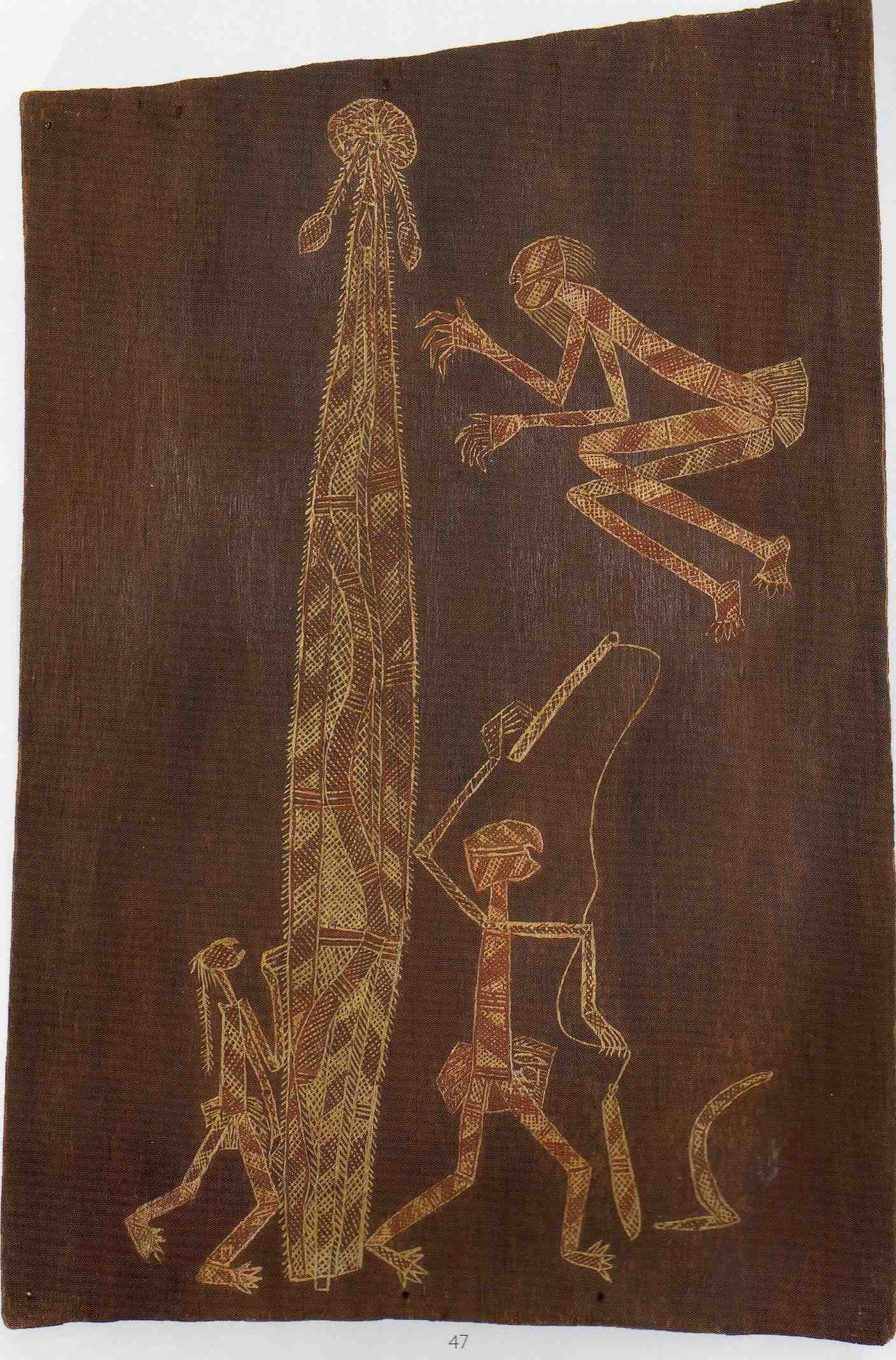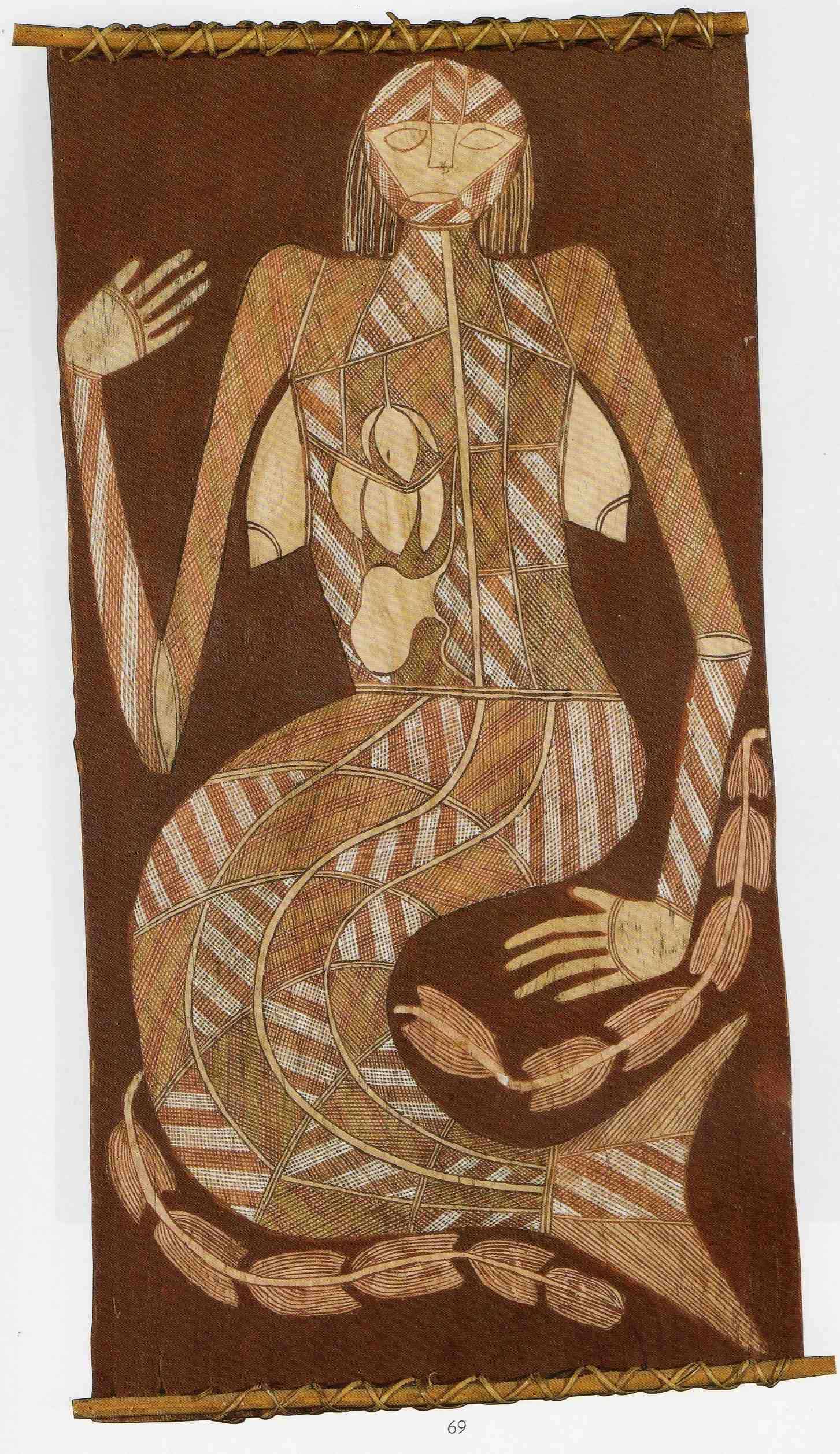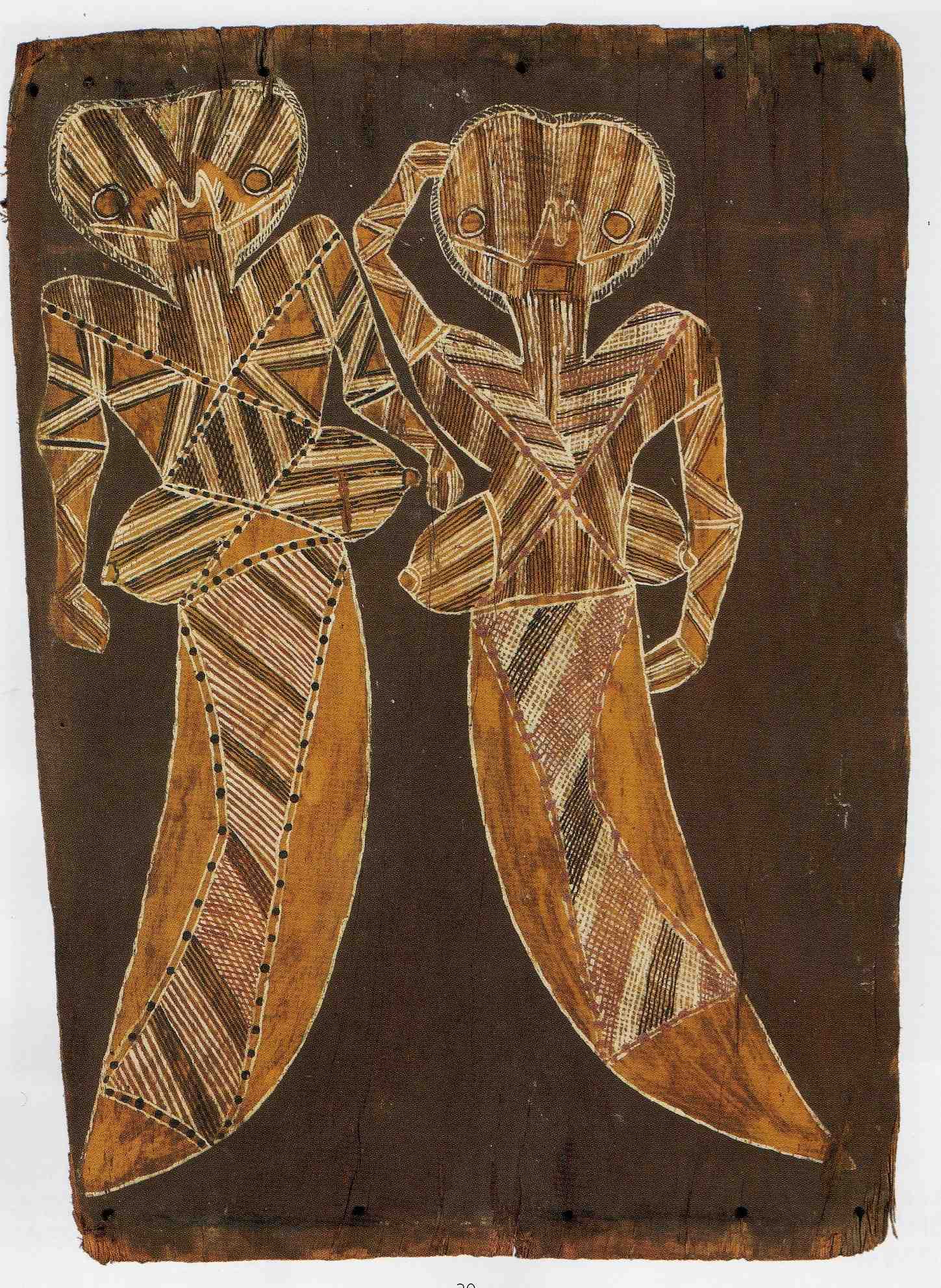Bobby Nganjmirra Oenpelli Bark Painting
Bobby Nganjmirra is one of the better known artists from Oenpelli. He was the elder brother of anothers artist Jimmy and Peter who painted in a very similar style. He is best known for his figurative works depicting ceremonies.
The aim of this article is to assist readers in identifying if their bark painting is by Bobby Nganjmirra. The article compares examples of his work. He painted in an Oenpelli style.
If you have a Bobby Nganjmirra bark painting to sell please contact me. If you want to know what your Bobby Nganjmirra painting is worth to me please feel free to send me a Jpeg. I would love to see it.
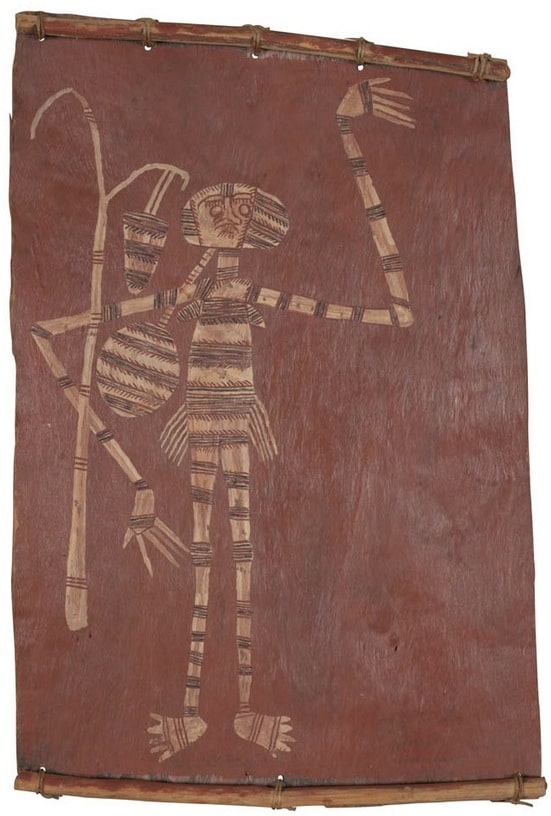
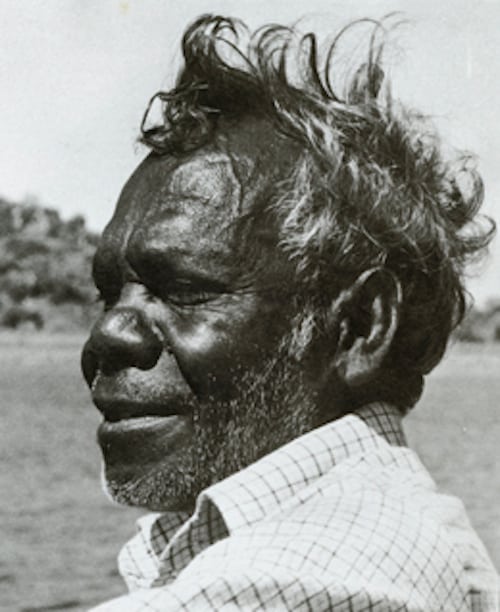
Bobby Nganjmirra Biography
Nganjmirra was born around 1915 at Malworn in his father’s country between the Goomadeer and Liverpool rivers in West Arnhem Land. Marlwon is best known as a Yawk Yawk (female water spirit) Dreaming site. This is the primary Dreaming of Bobby Nganjmirra’s branch of the Djalama clan. Nganjmirra grew up in Marlwon living a traditional lifestyle, visiting Oenpelli for a short time in 1930. Bobby Nganjmirra spent a short time at school there at Oenpelli and also on Goulburn Island. After the Second World War he met anthropologists Roland and Catherine Berndt. He shared some of his traditional knowledge with the Berndts and they collected some of his works. In 1975 he became a member of the Aboriginal Arts Board. Most of Bobby’s works are on bark using natural ochres although he did do a few works on paper.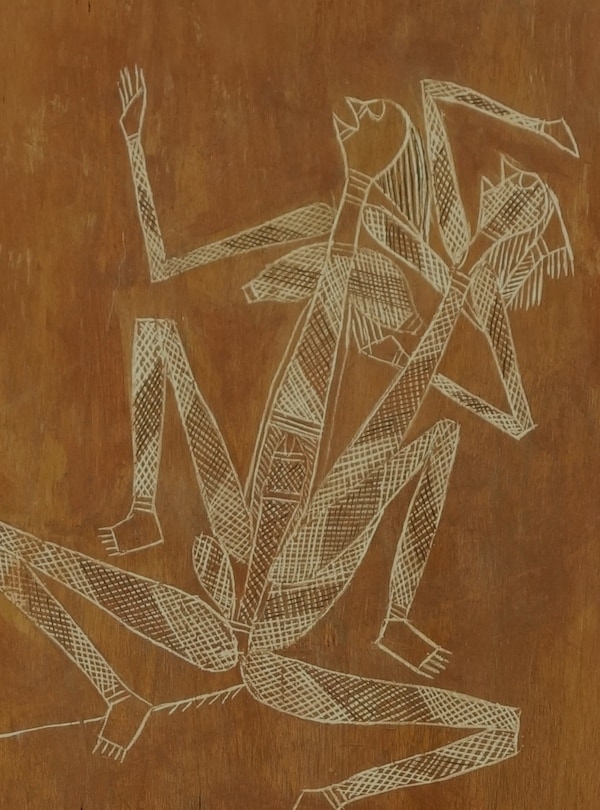
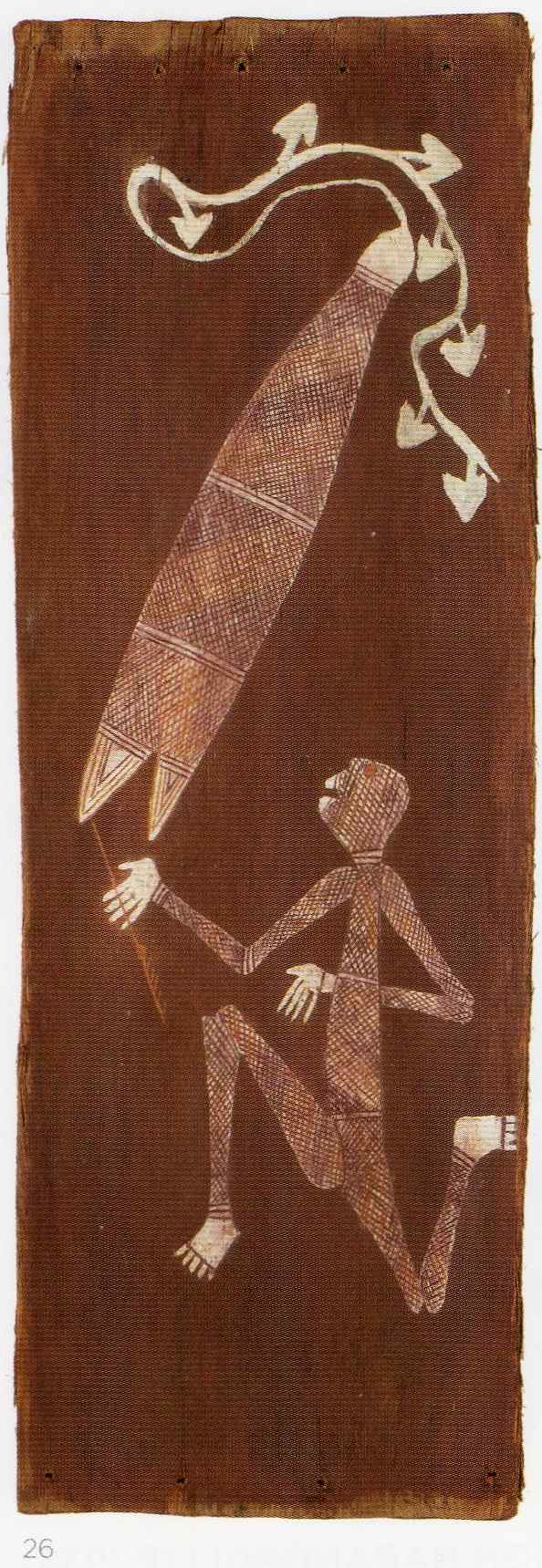
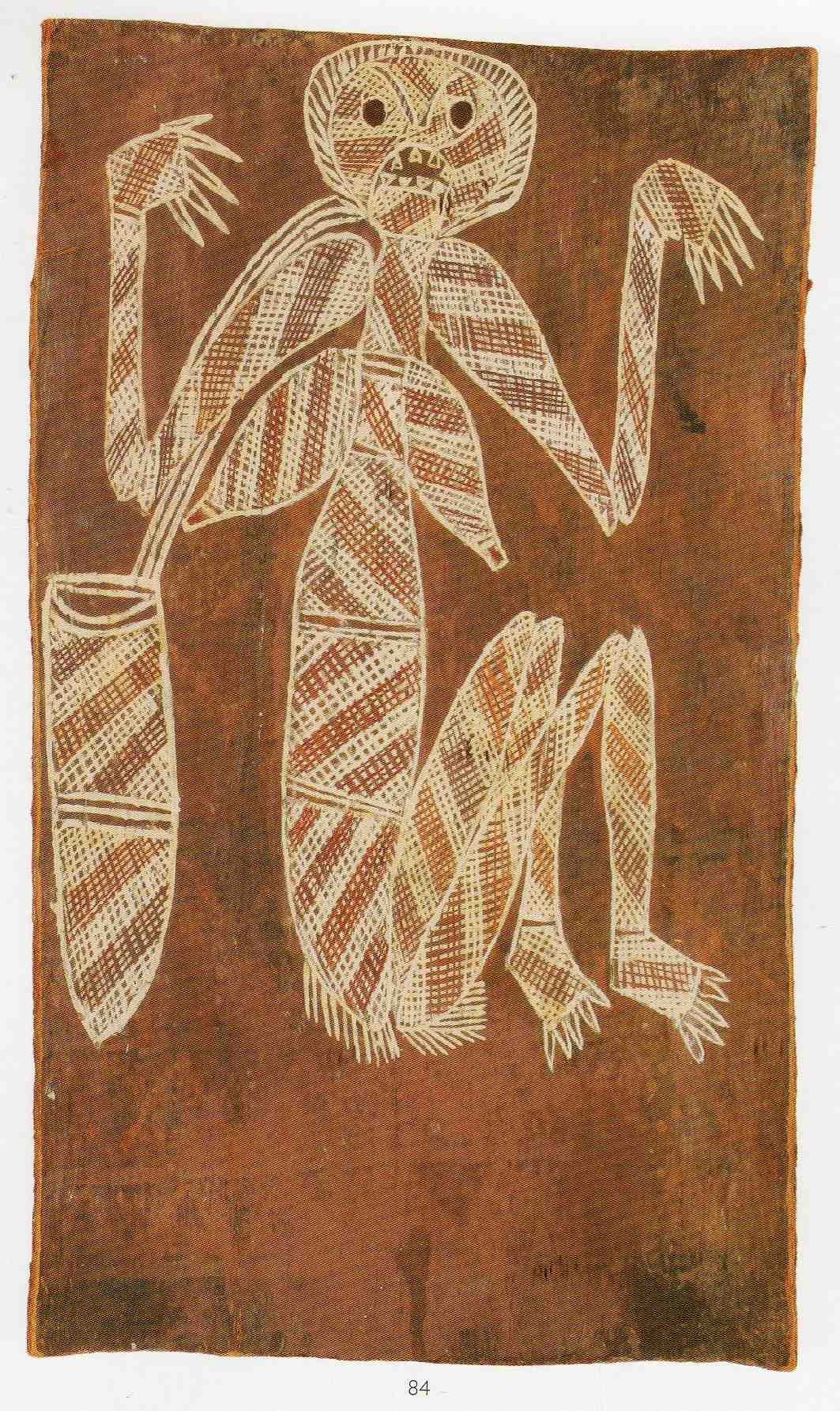
All images in this article are for educational purposes only.
This site may contain copyrighted material the use of which was not specified by the copyright owner.
Luma Luma
Luma Luma came to the lands of the Kunwinjku and Kuninjku from far to the east. Luma Luma carried with him a stone axe, a spear and a power bag (a woven dilly bag containing sacred objects). Wherever he travelled, Luma Luma claimed the country and established the laws which governed the first peoples. He taught people to perform sacred rituals and showed them the sacred objects that were the source of his power.
Luma Luma instilled fear in the first peoples, as his absolute authority was coupled with a degree of greed which was to be his downfall. Whatever foods his wives collected and cooked, he would declare to be taboo, thus they were prohibited from eating these. He would do the same with the game caught by the men. And while the men were away on their hunting expeditions, he would sleep with their wives. While Lumah Lumah prospered, the others starved. Some of the husbands sought retribution but were no match for Luma Luma.
The ancestors of Kunwinjku and Kuninjku decided to take their revenge on the giant. They laid a trap and the giant was engulfed by fire. As he burned, the clansmen peppered his body with spears. Yet Luma Luma begged to be spared so that he could show the men how to draw the sacred rarrk or ancestral clan cross-hatched designs by cutting them into his flesh.
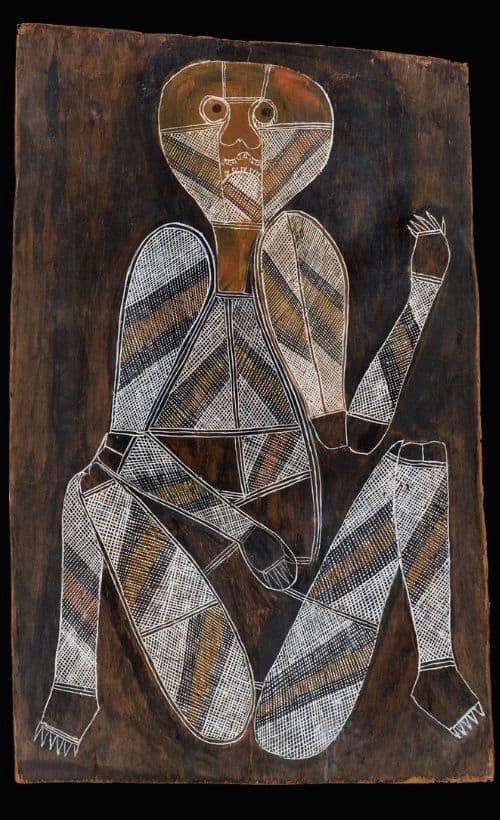
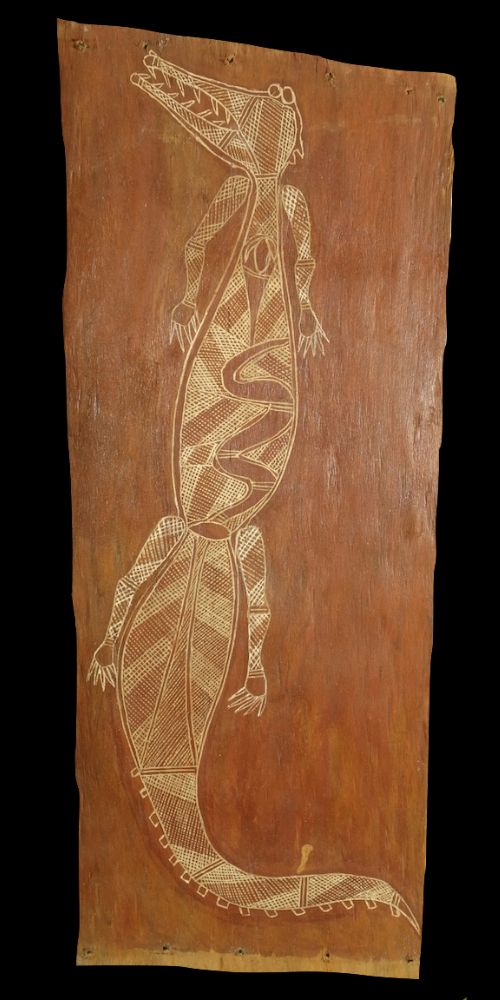
Namanjwarre the Crocodile
Namanjwarre, the saltwater crocodile, Corcodylus porosus. The crocodile totem Namanjwarre is a Yiridja moiety totem.
The estuarine crocodile or Namanjwarre is the protector of the sacred objects of the Mardayin ceremony. The Mardayin ceremony is an important rite of passage for Kuninjku language speakers of Western Arnhem Land. Namanjwarre would devour anyone who transgressed from the correct ceremonial protocol.
The upper Liverpool River and Maragalidban Creek areas had lots of these crocodiles. Crocodiles are rarely killed for food but their eggs are sought after during the wet season when the females are nesting. A major crocodile sacred site exists near the outstation of Kurrindin, in the Liverpool River District.
The treatment of the infill of Namanjwarre is the same used on Mardayin ceremonial objects. Mardayin objects decorated with the same bright patterns of crosshatching and dotted lines. Mardayin objects are secret and sacred. The use of the same design within the crocodile, thus, shows the interconnection of the crocodile and the Mardayin ceremony.
Namanjwarre is an important totem and is danced in the sacred and secret ritual of the Mardayin ceremony.

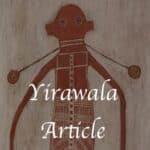
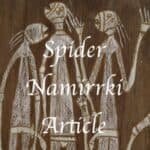
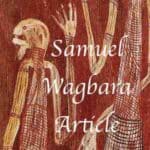
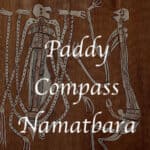
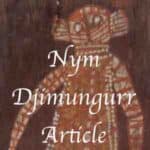
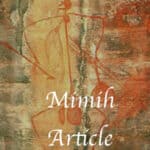
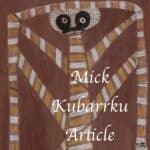
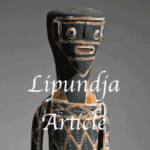
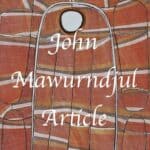
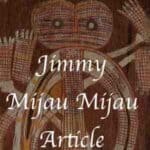
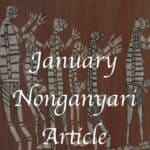
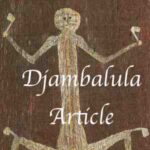
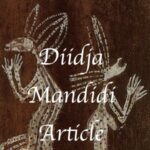
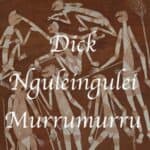

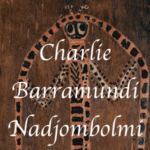
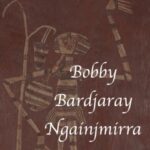
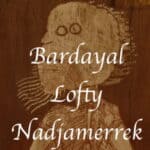
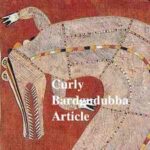
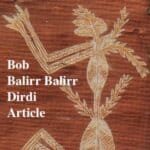
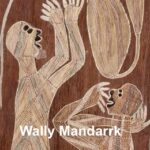
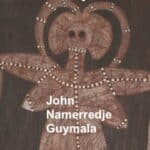
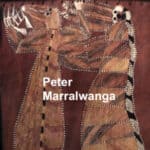
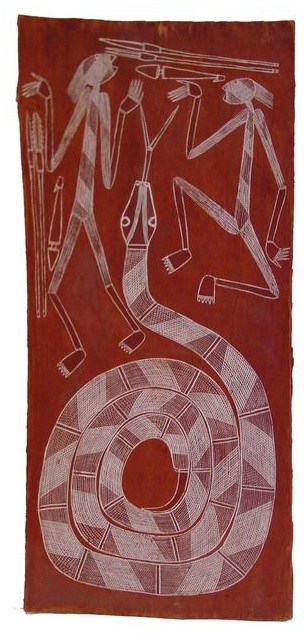
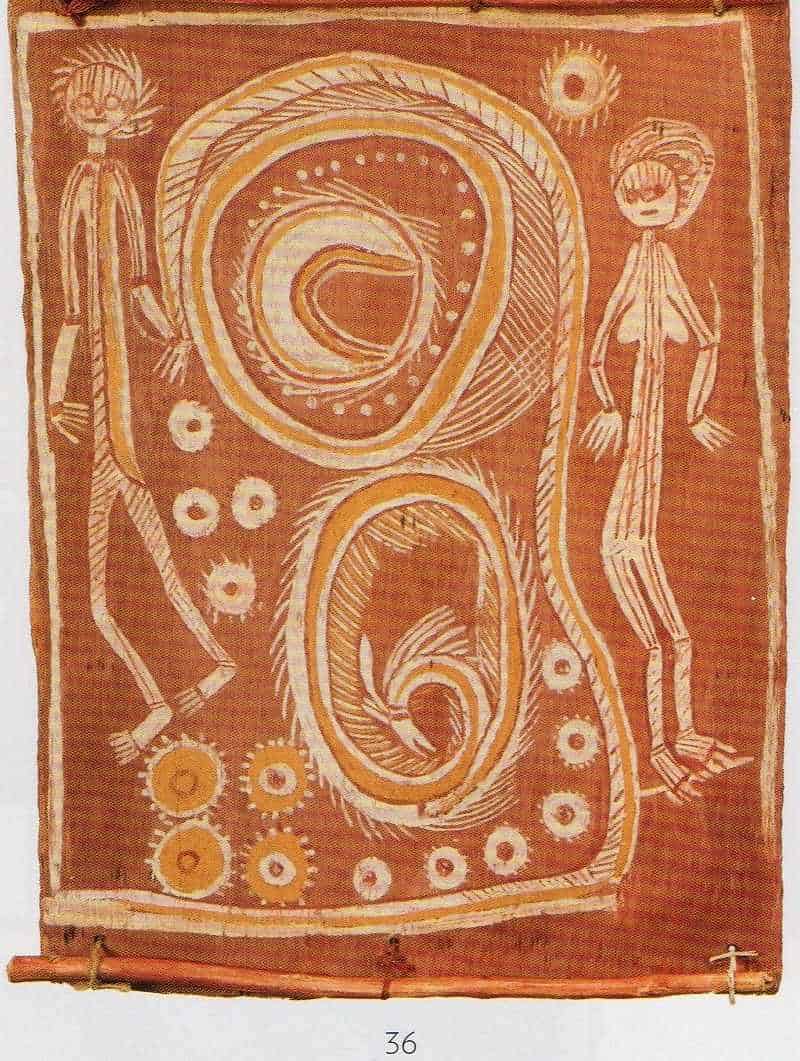
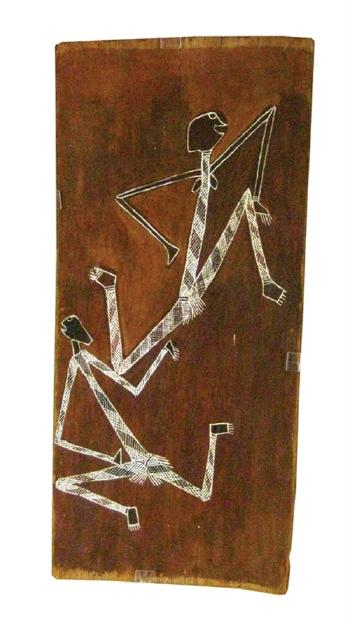
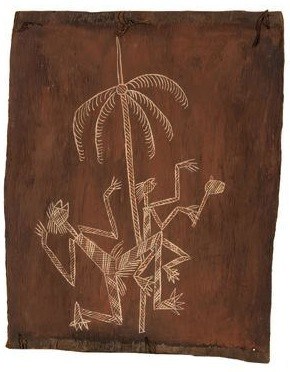
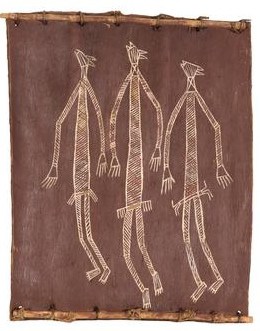
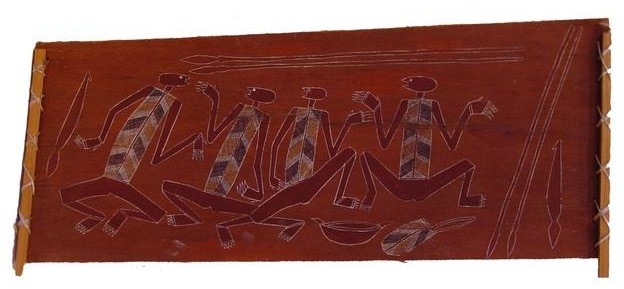
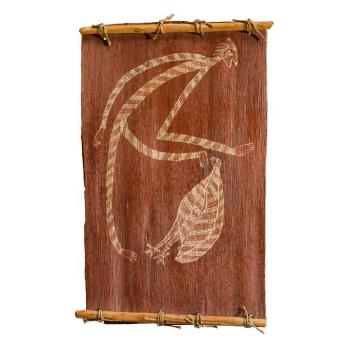
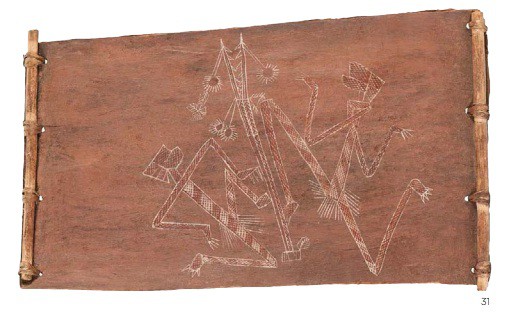
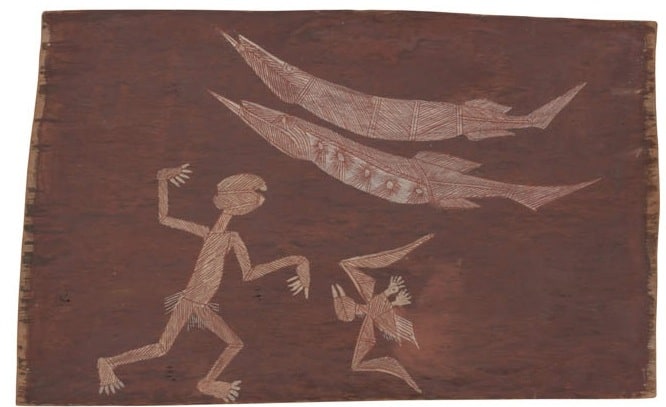
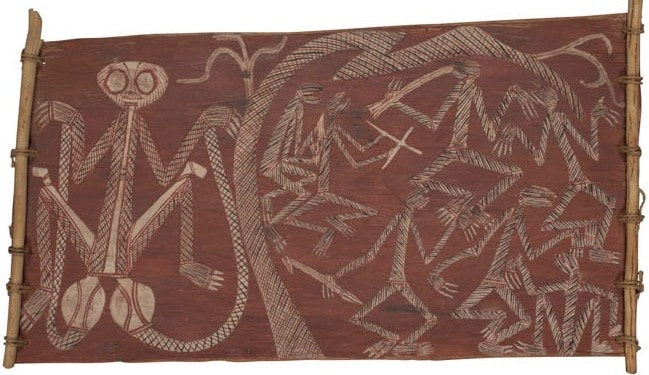
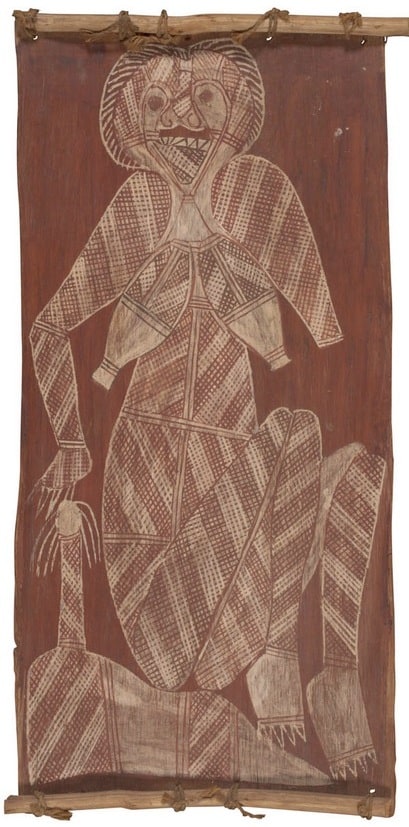
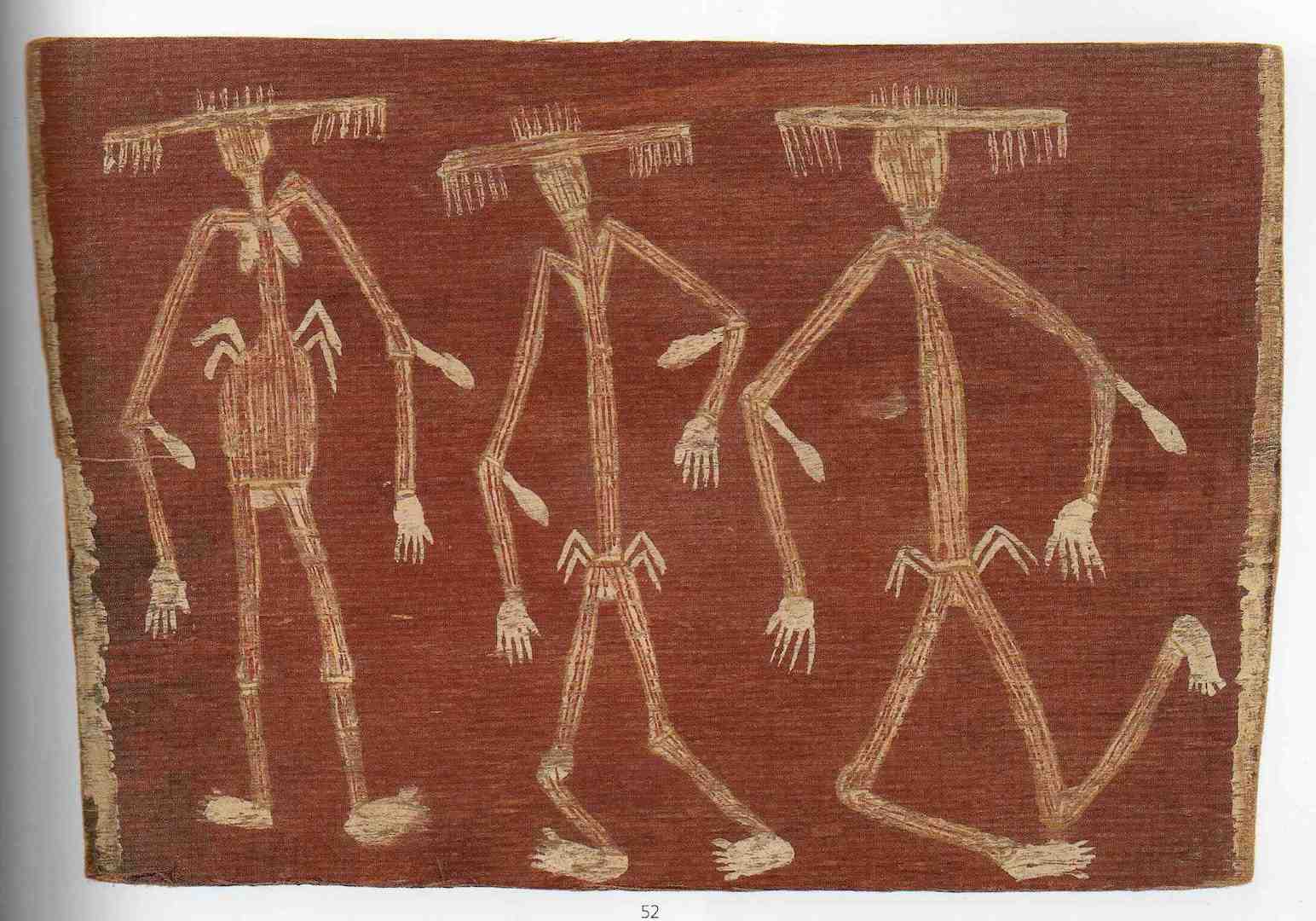
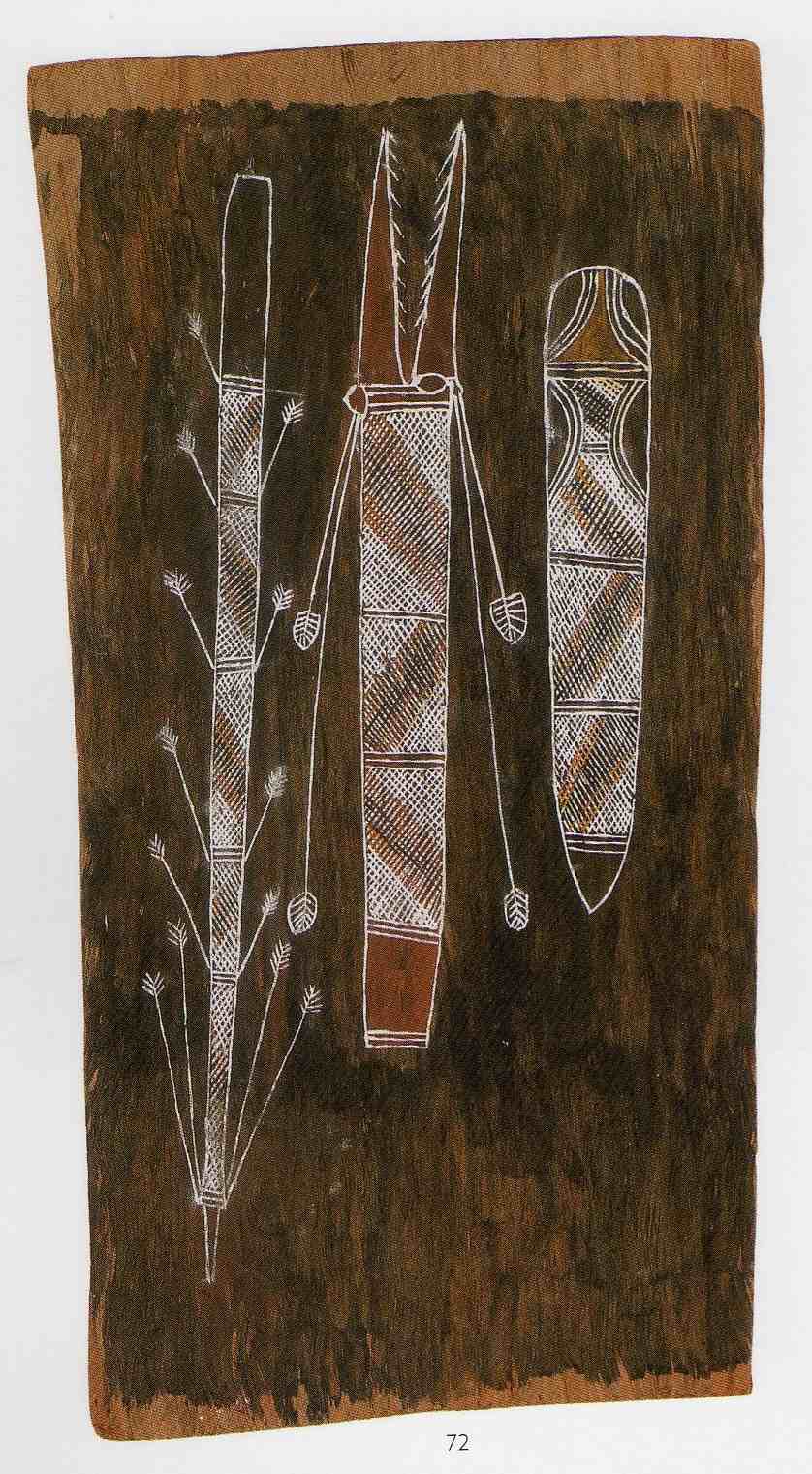
![austrak]lian aboriginal painting of a kangaroo](https://www.aboriginal-bark-paintings.com/wp-content/uploads/2017/09/Ngainjmirra-Jimmy-915-BON-14-.jpg)
